

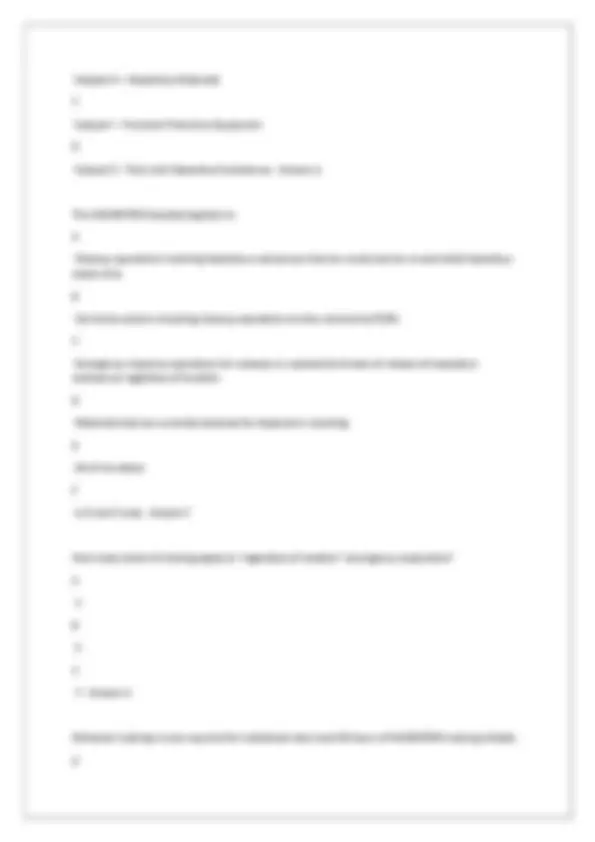
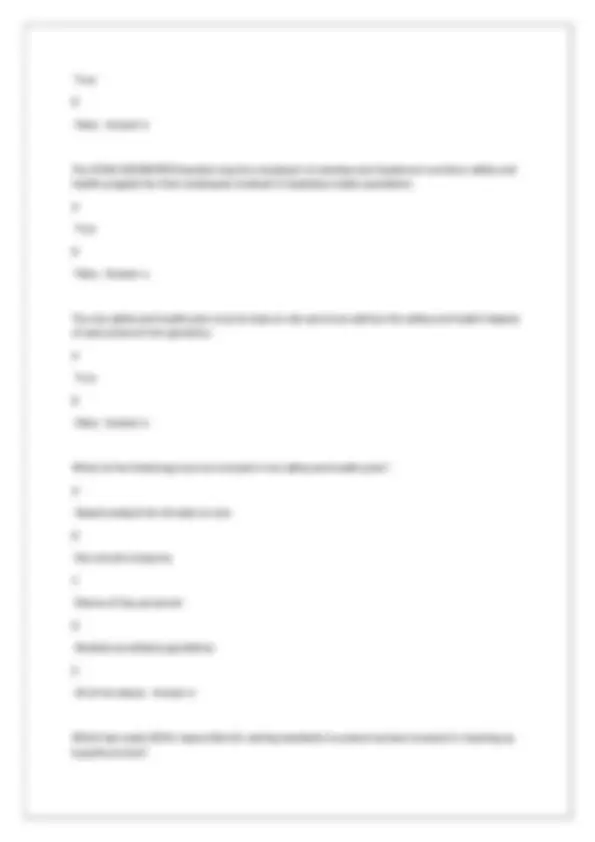
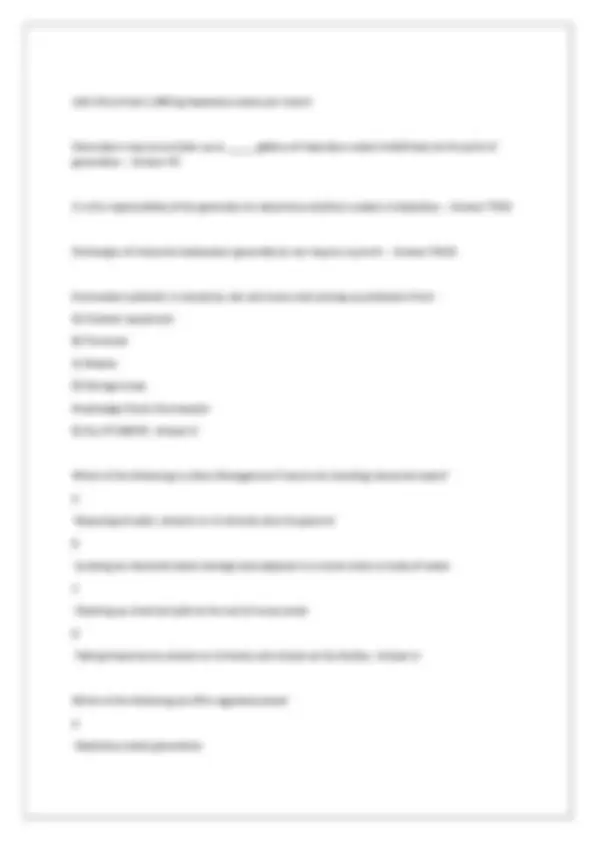
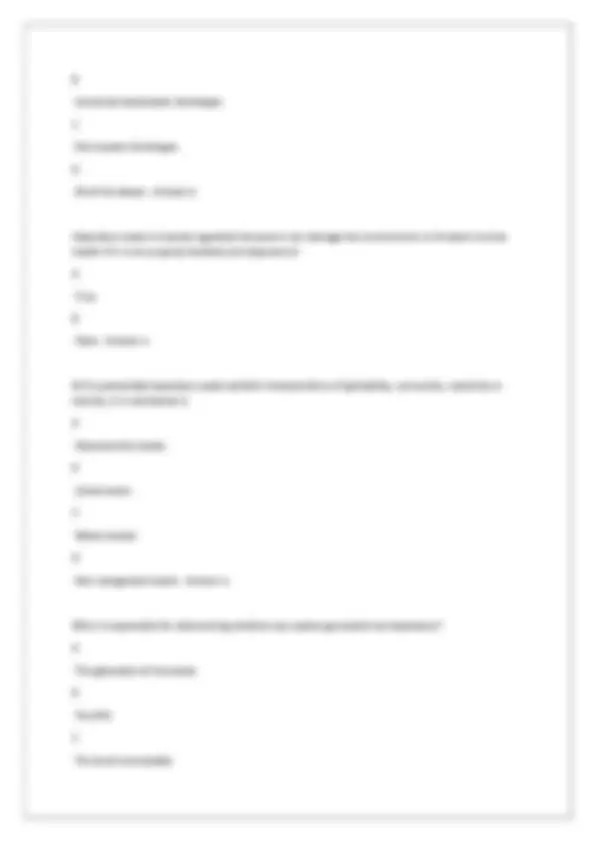
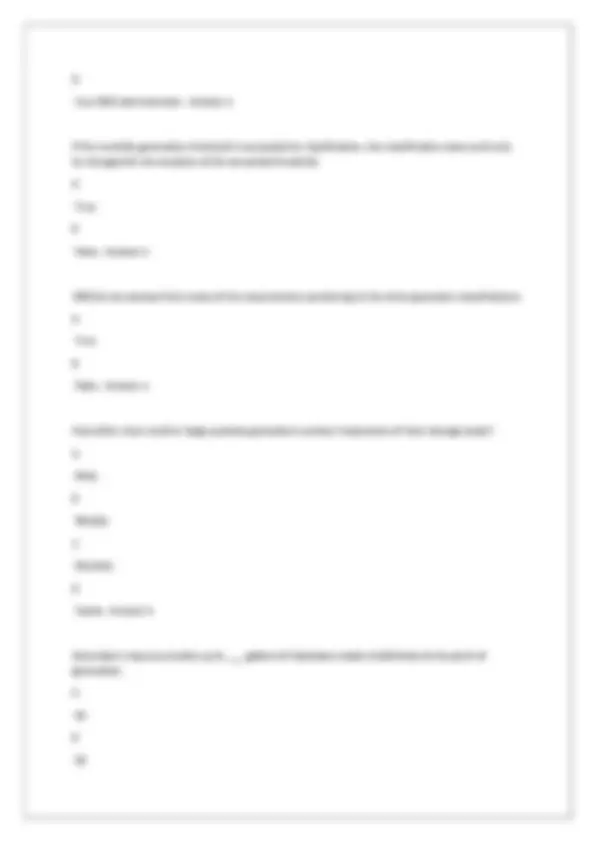
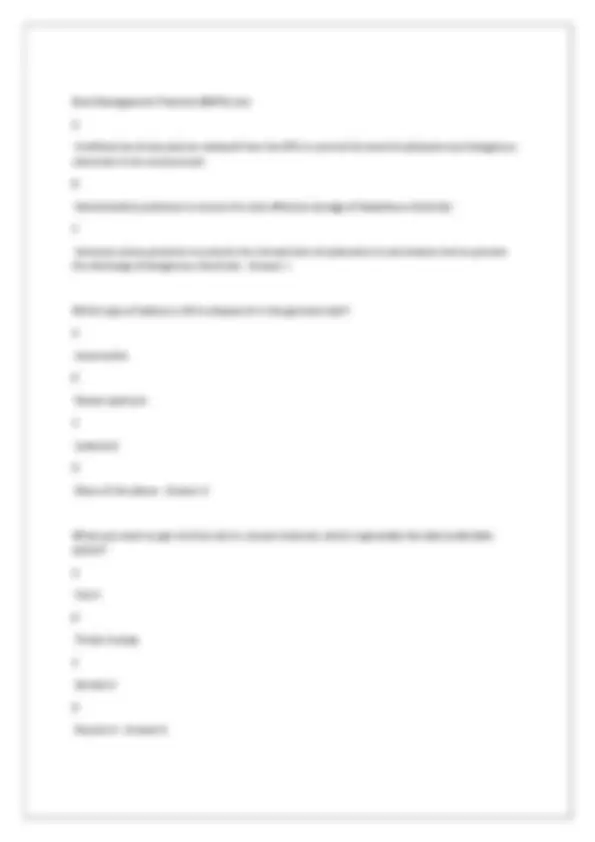
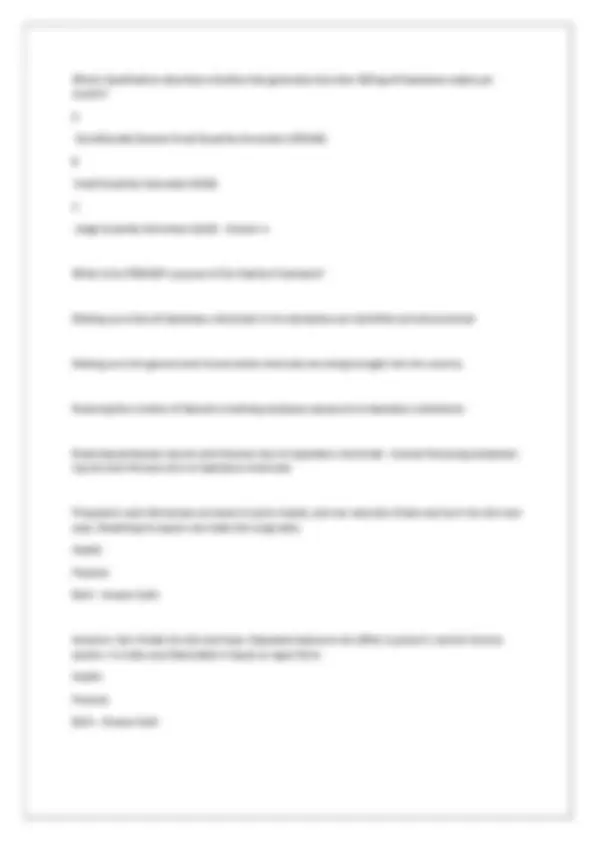
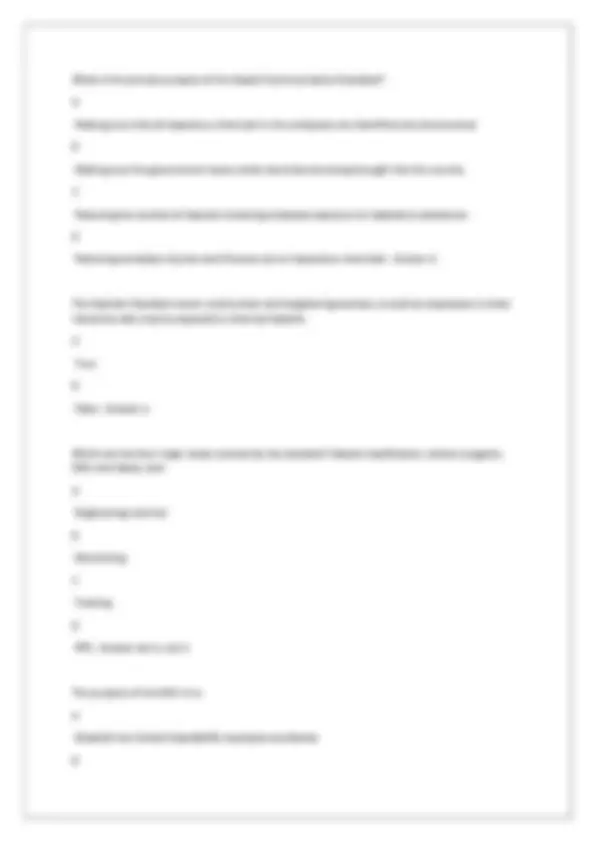
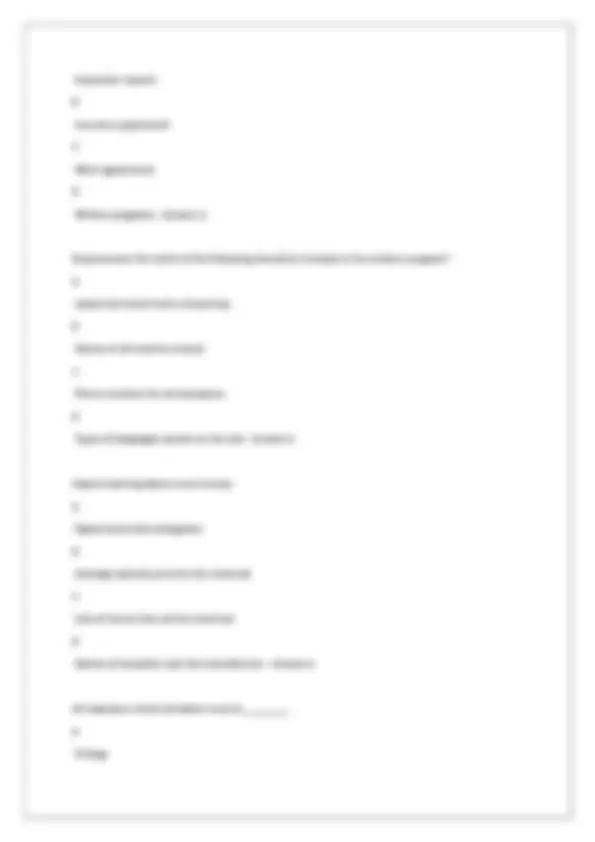
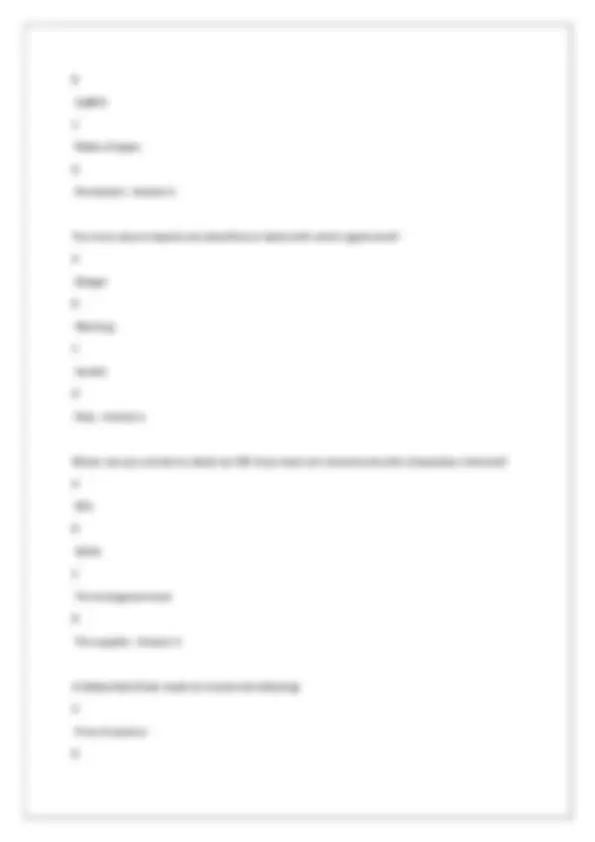
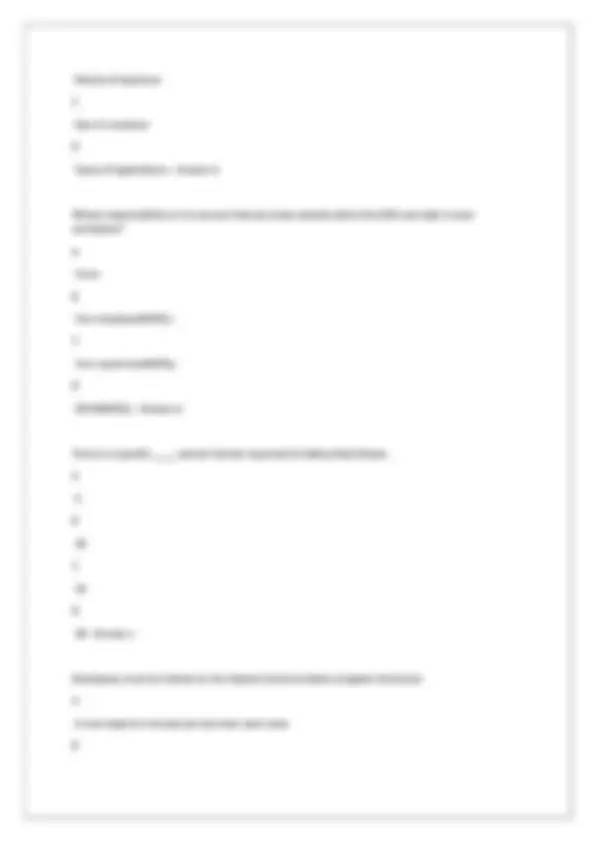
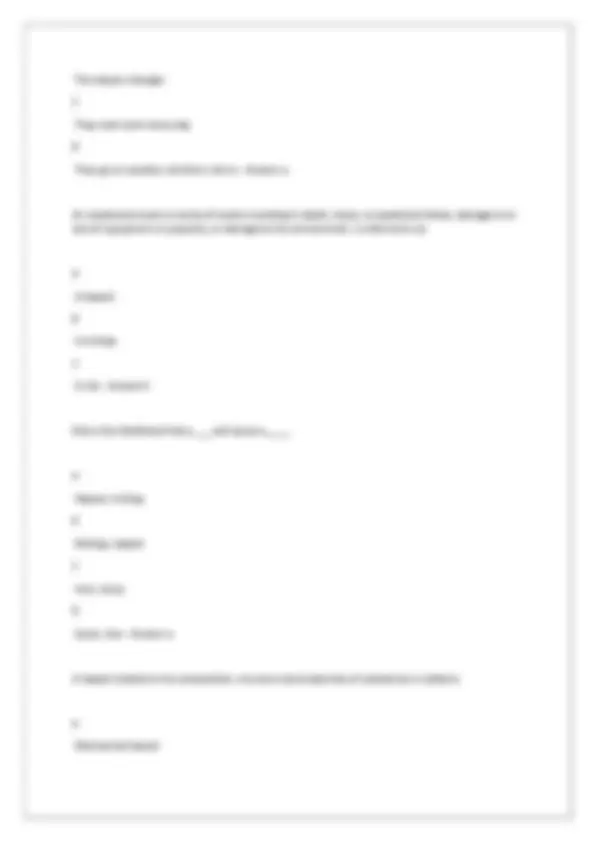
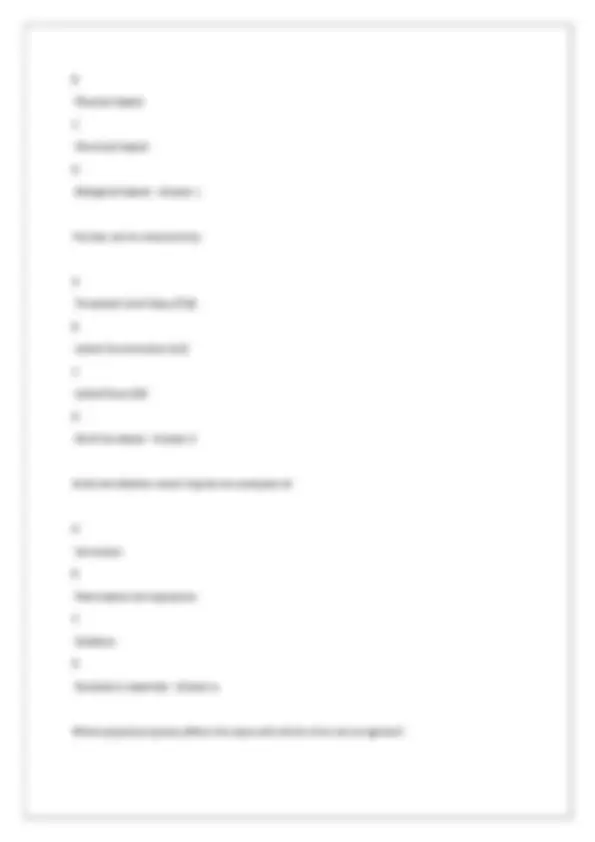
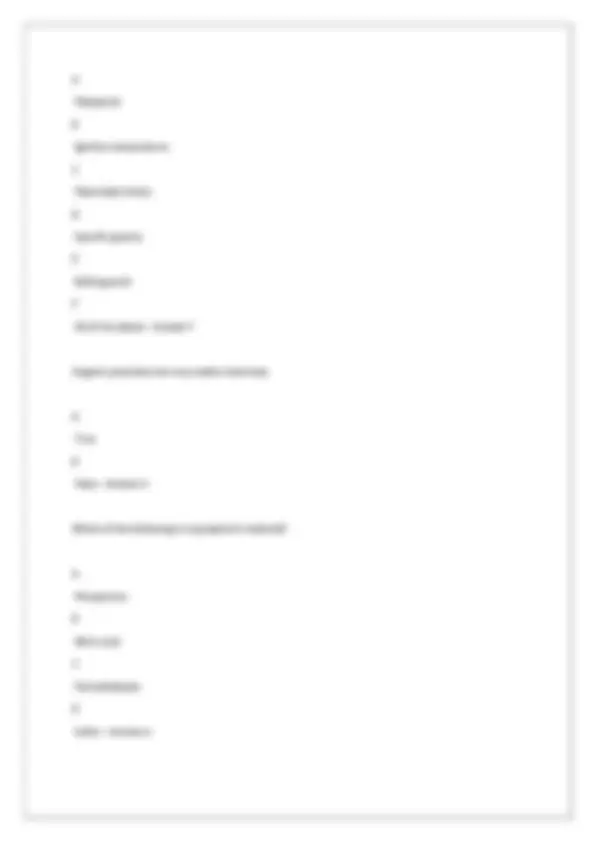
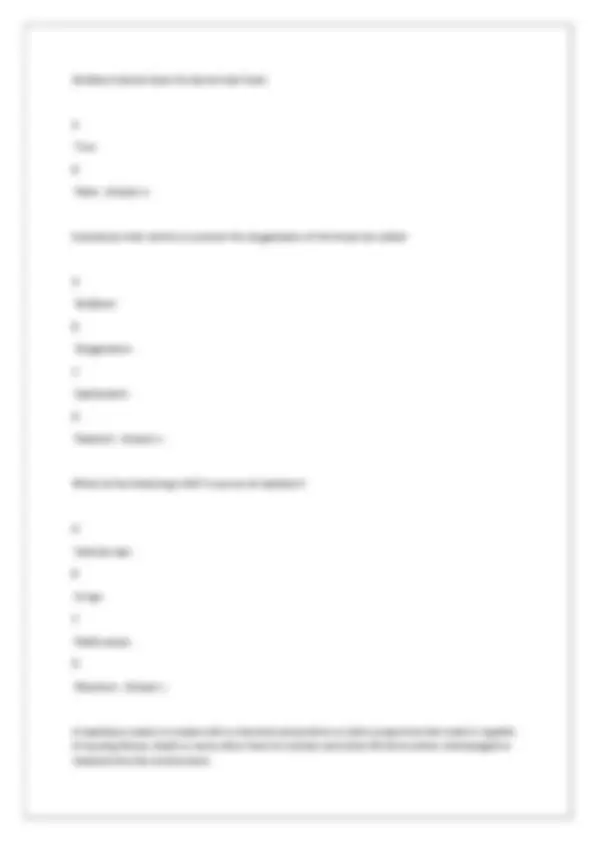
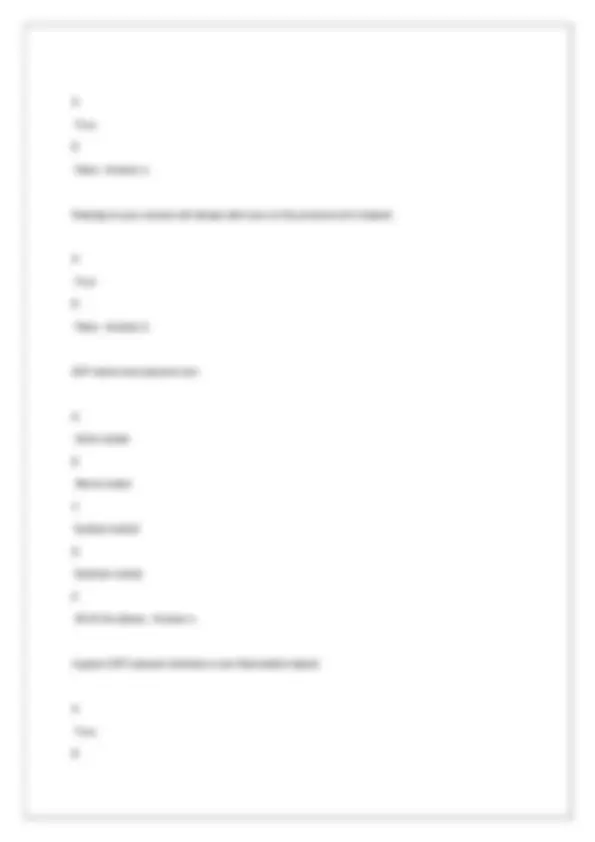
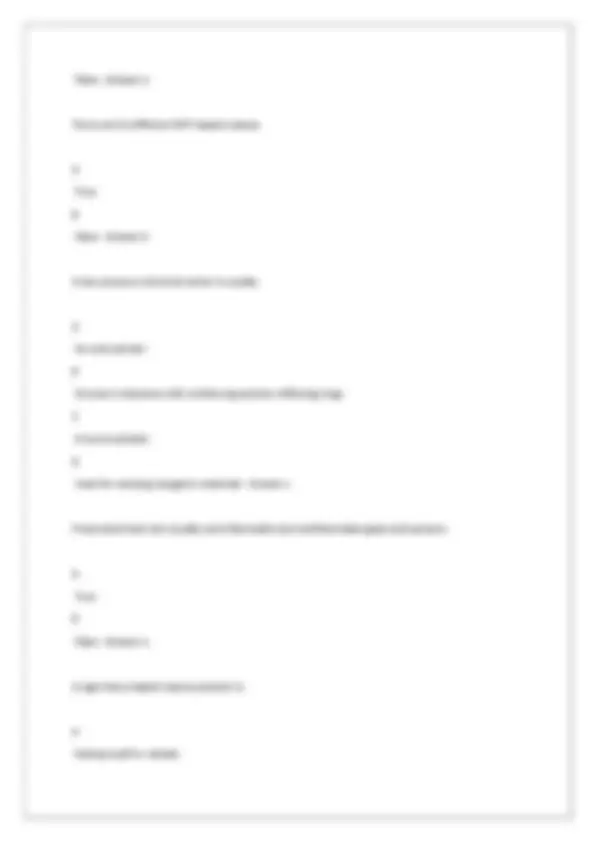

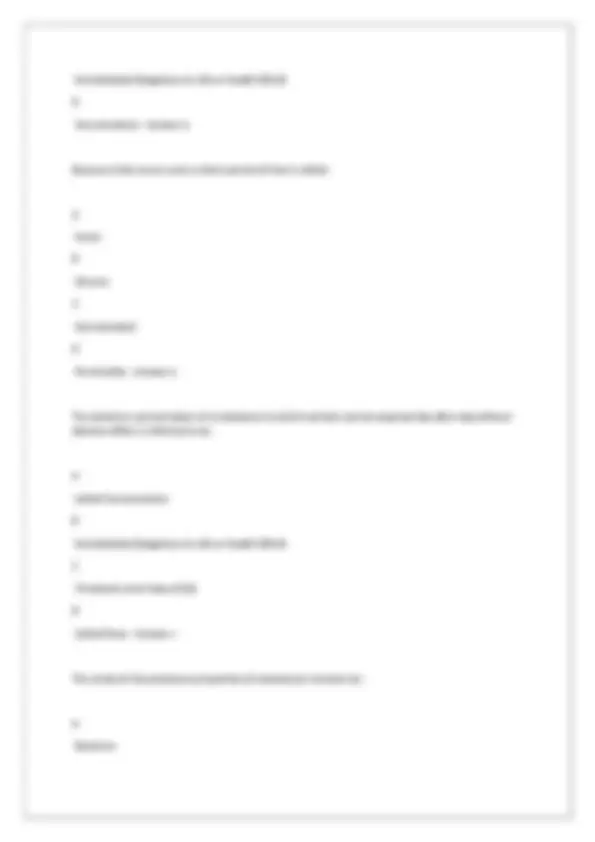
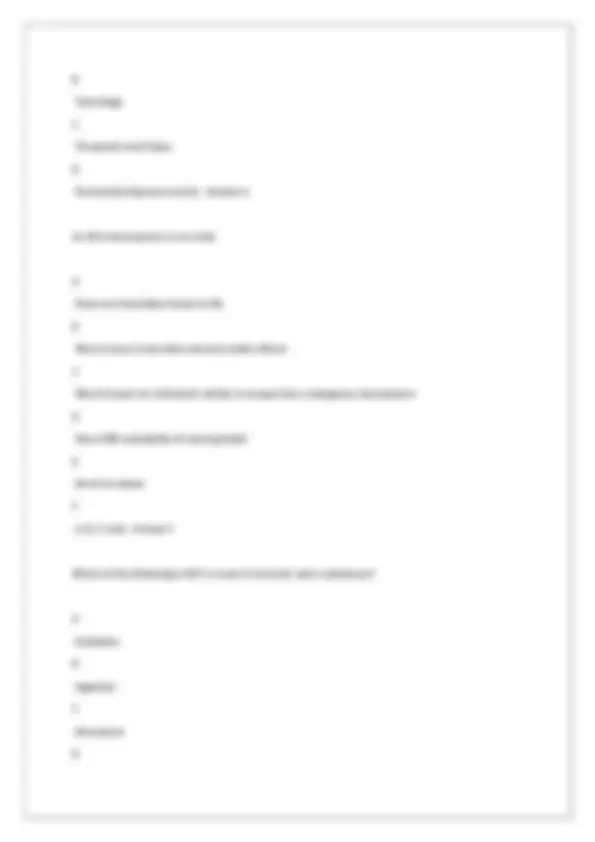
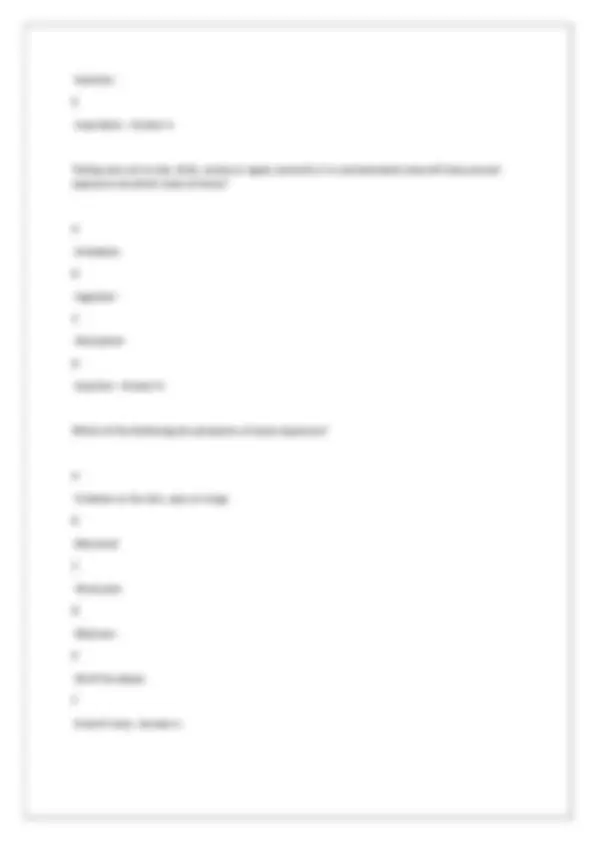
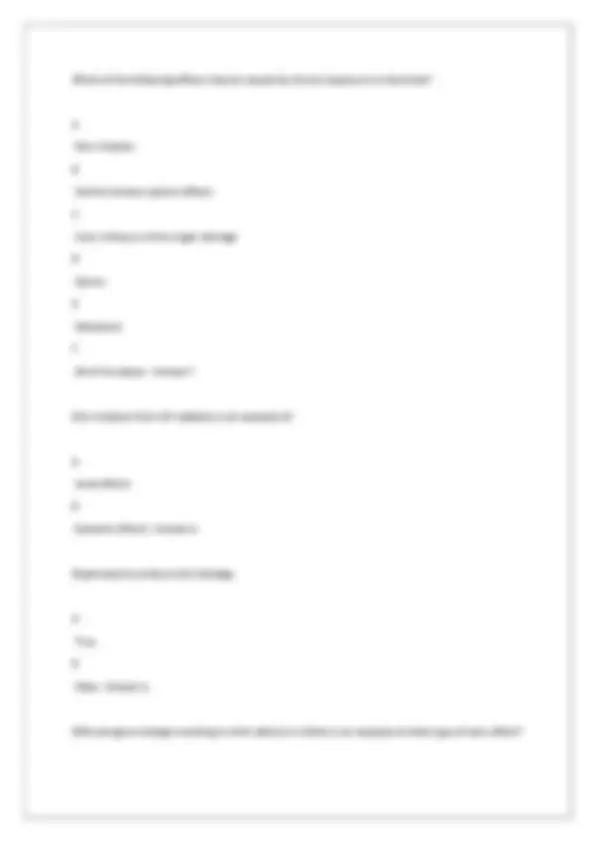
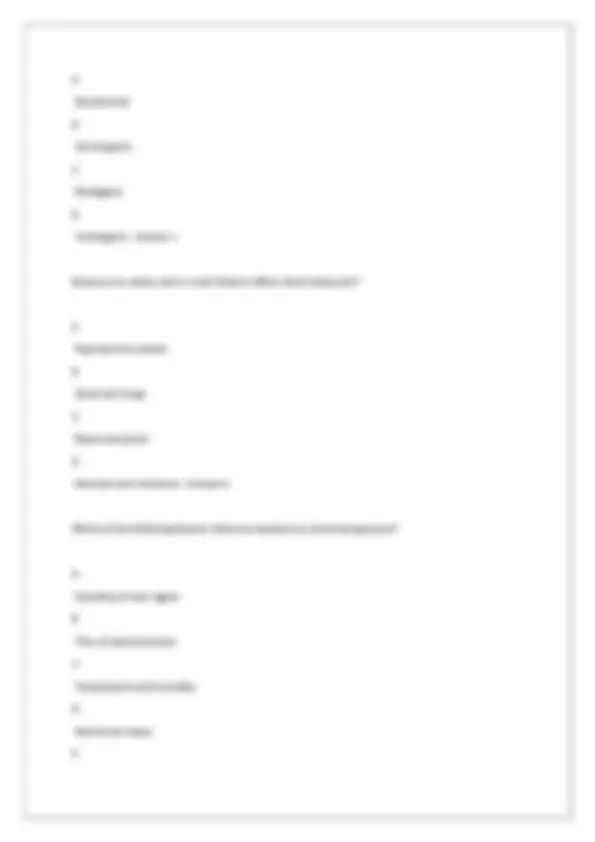
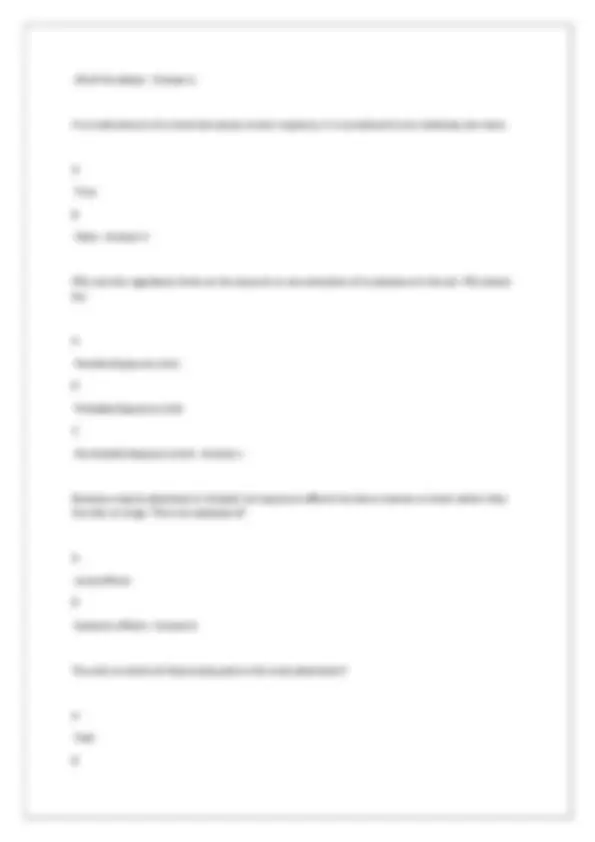
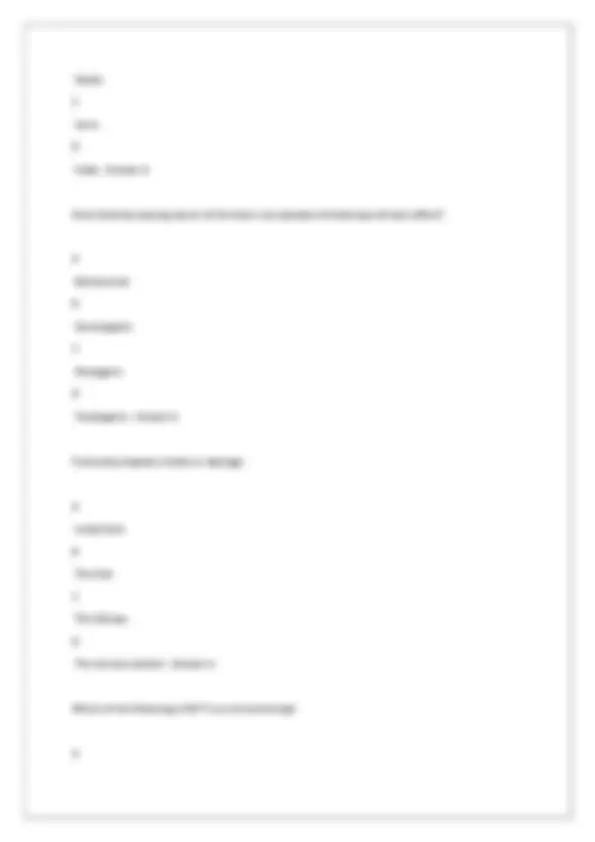
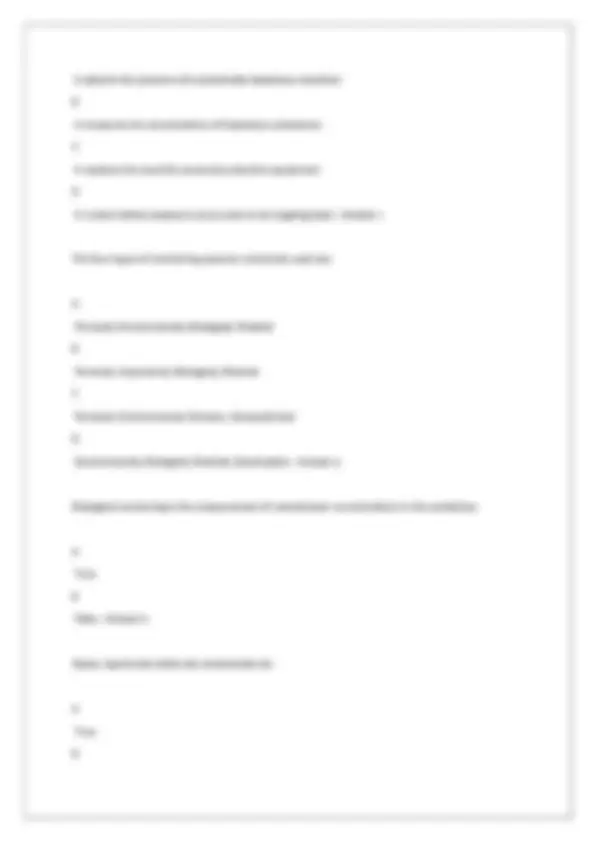
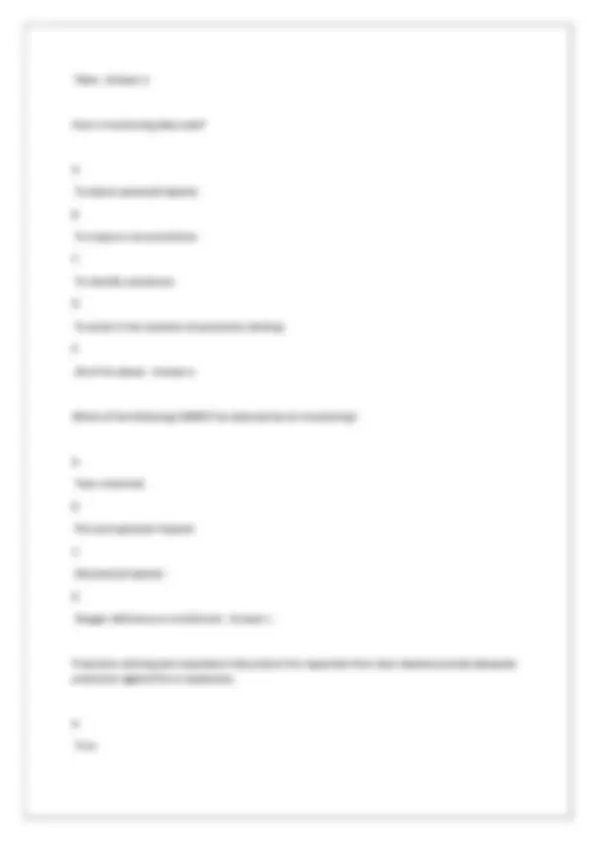
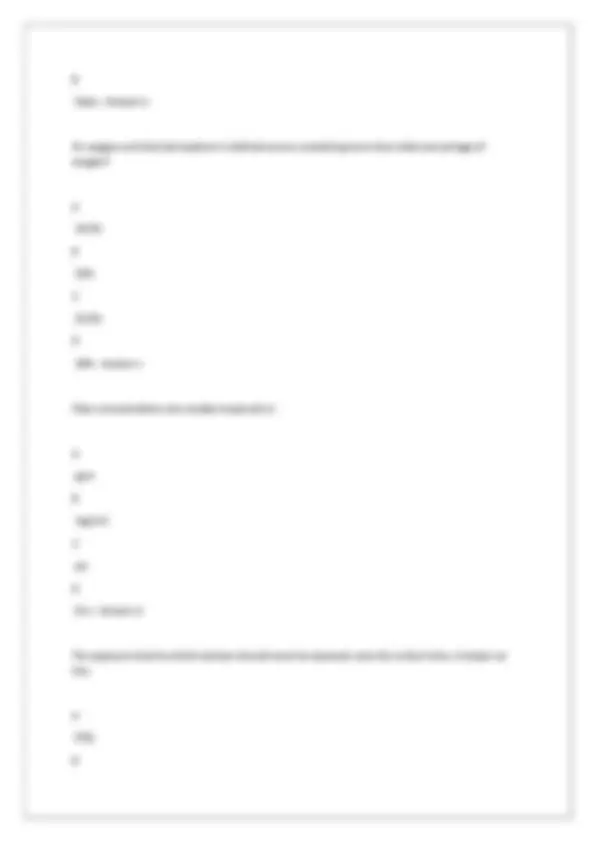
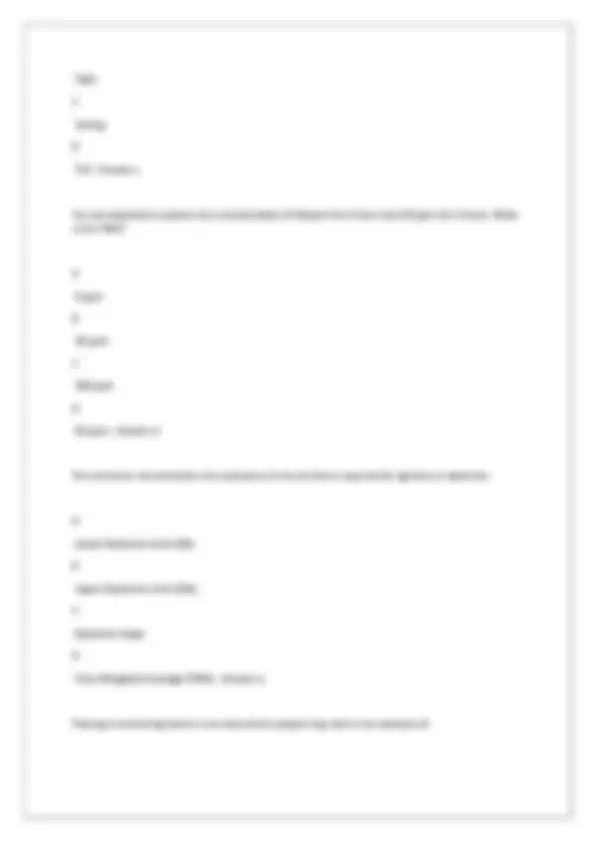
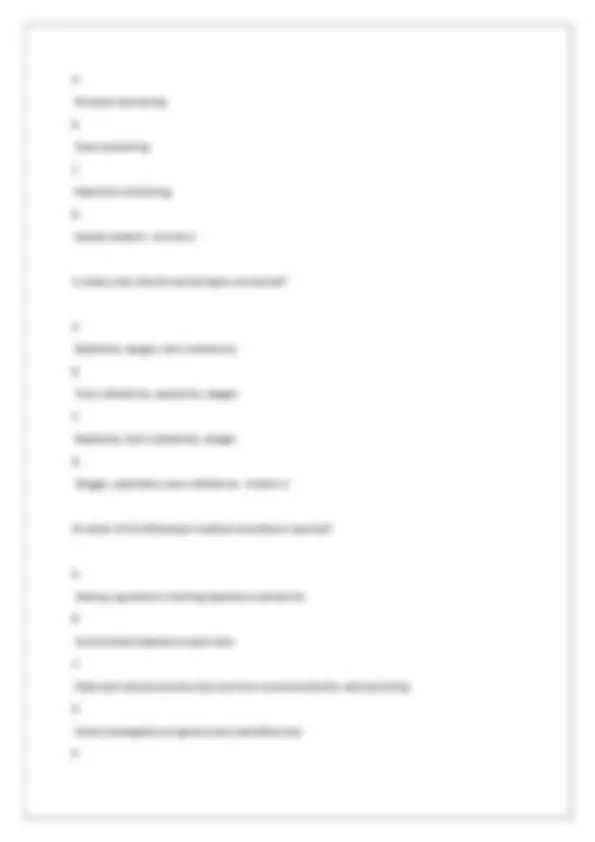
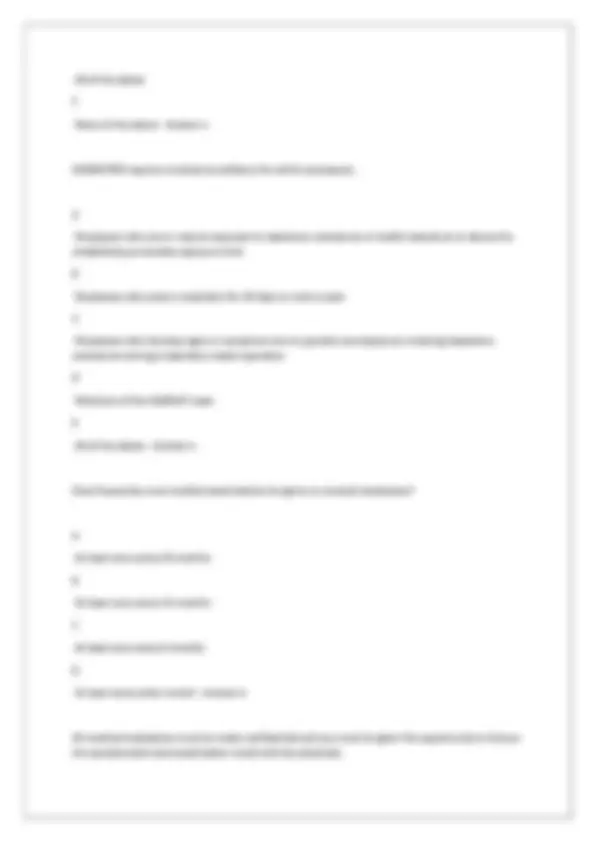
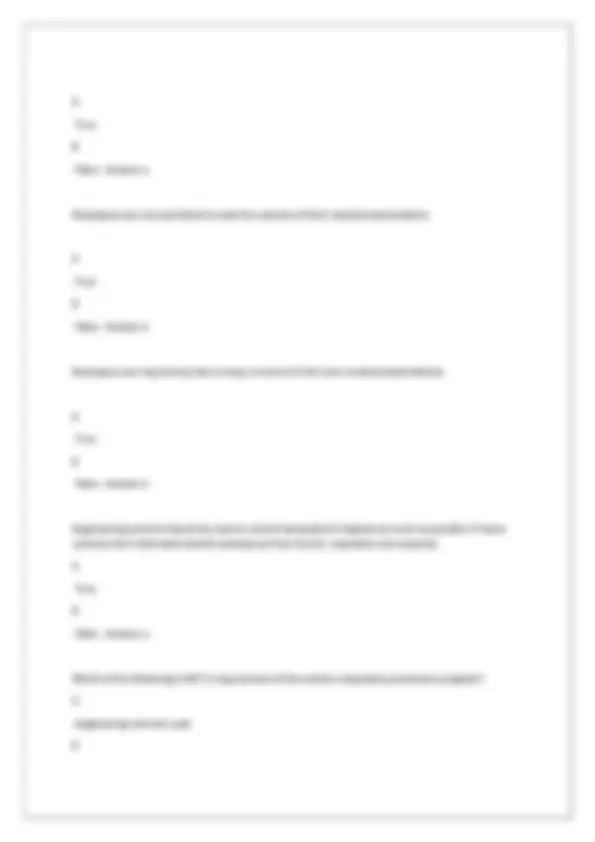
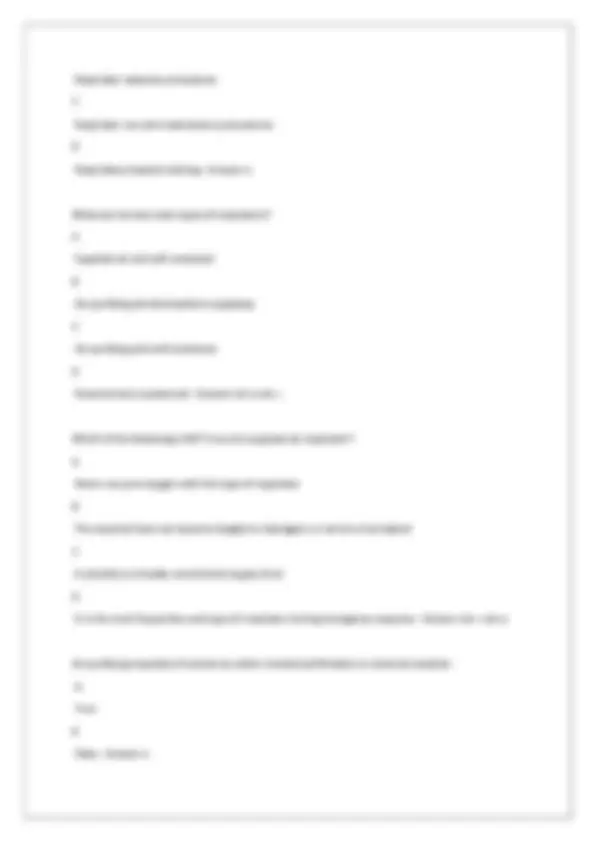
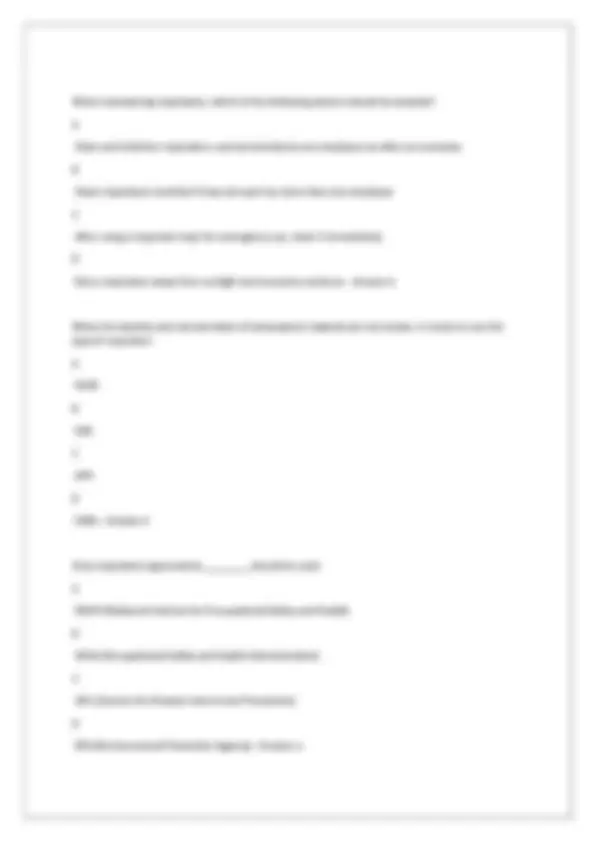
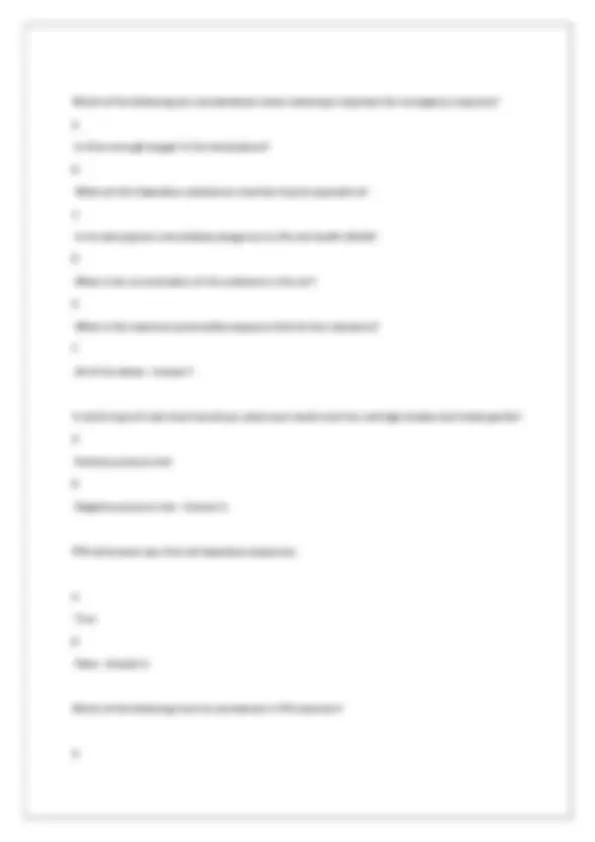
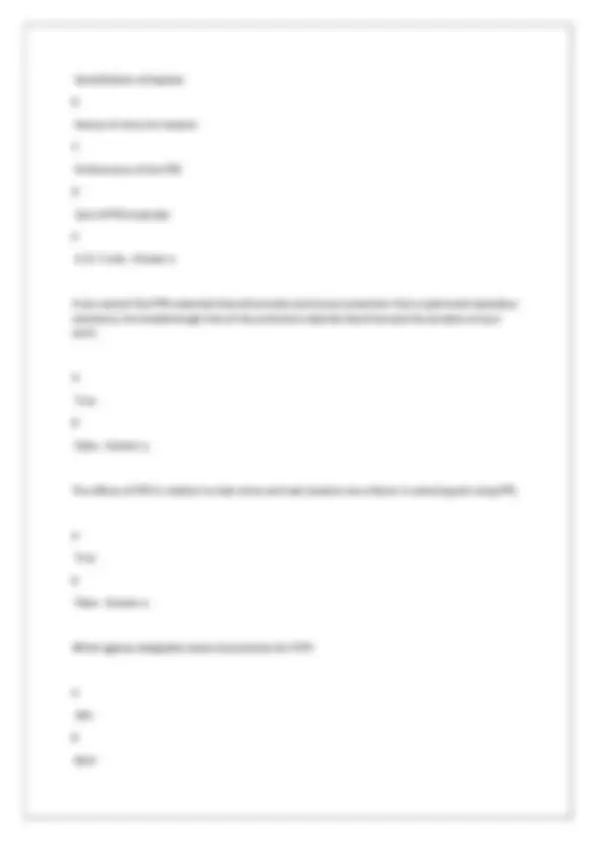
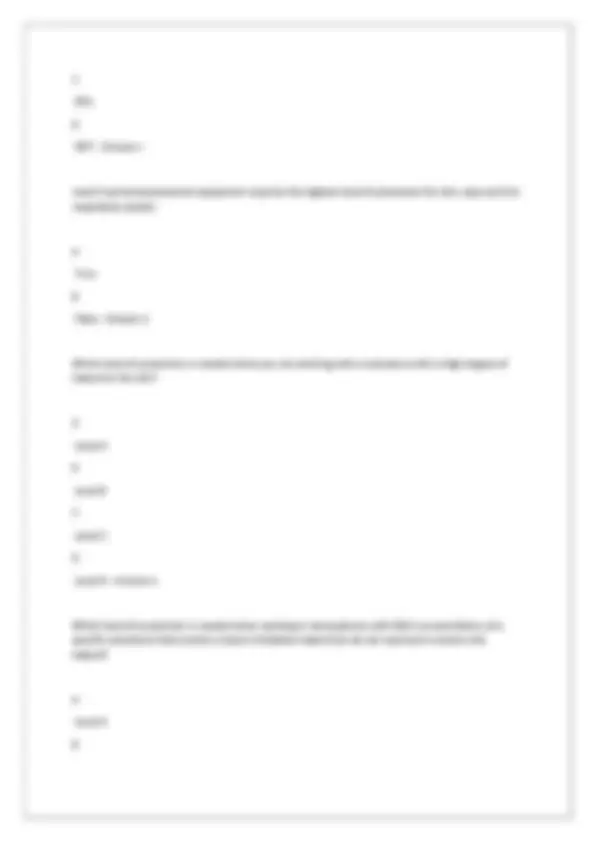
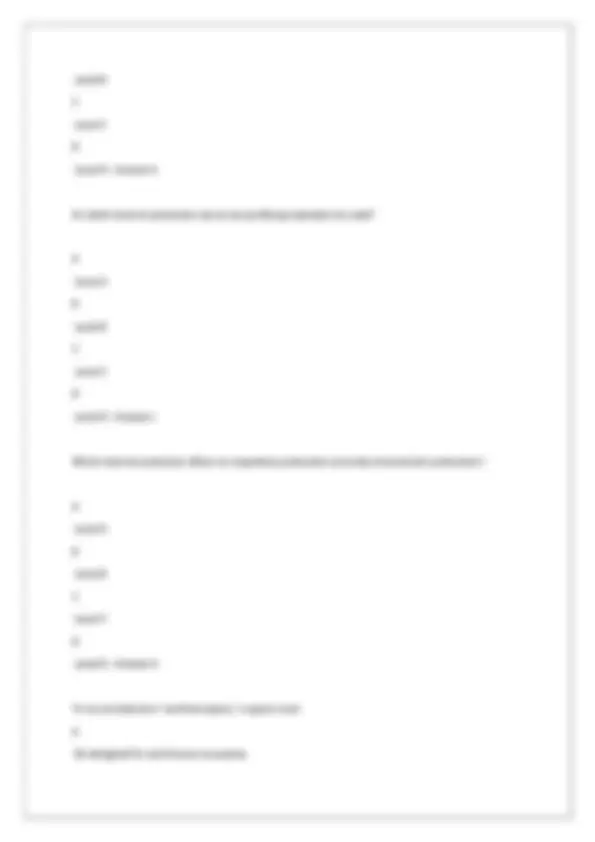
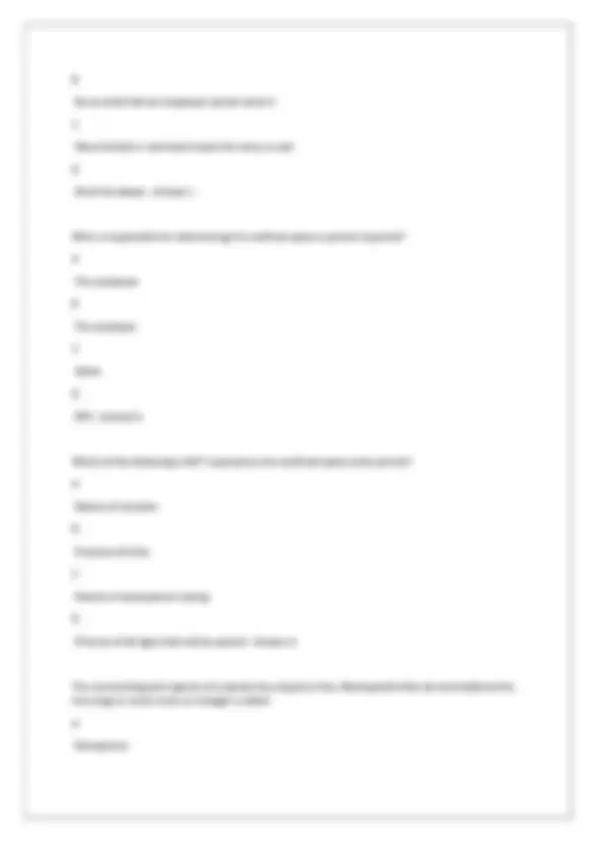
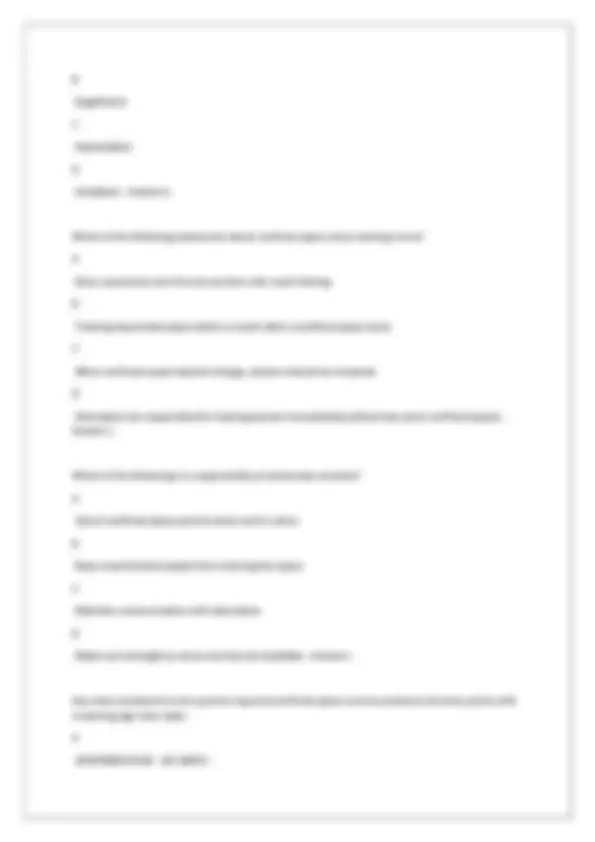
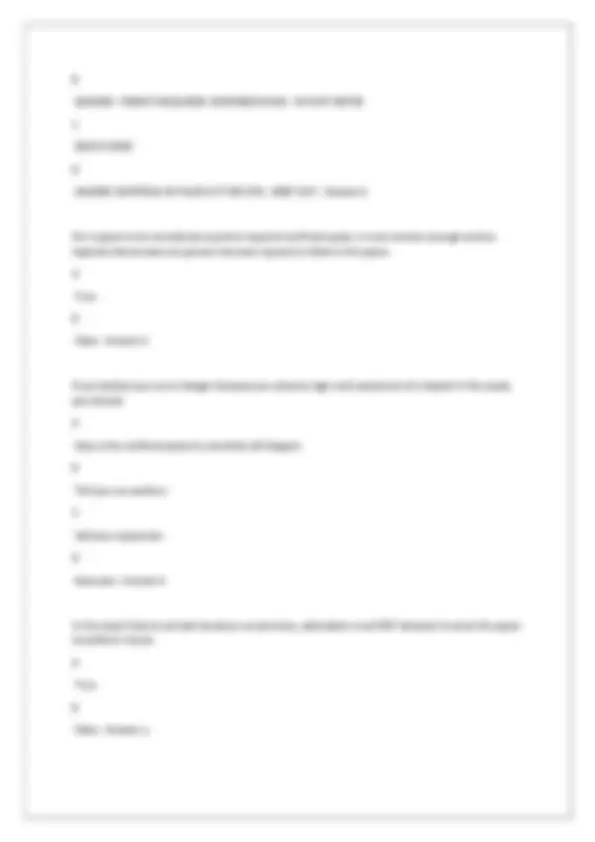
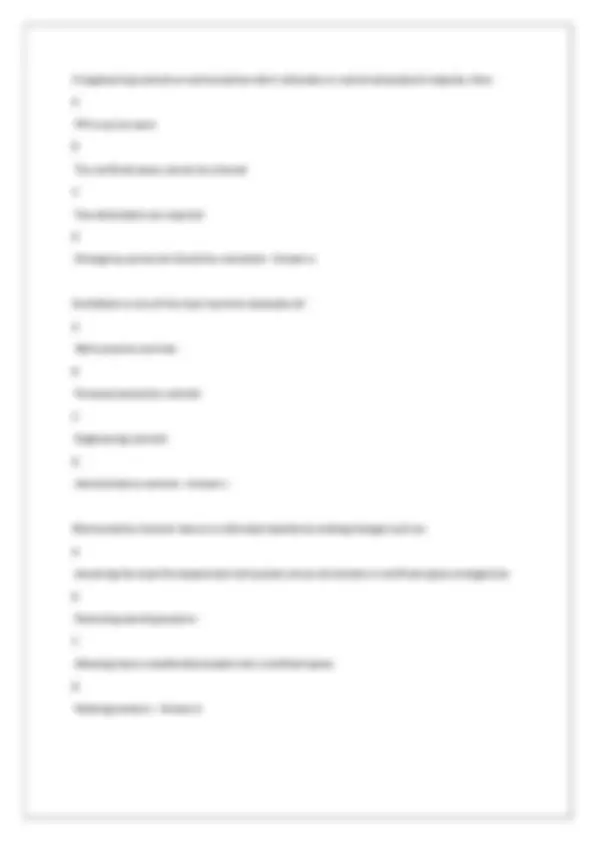
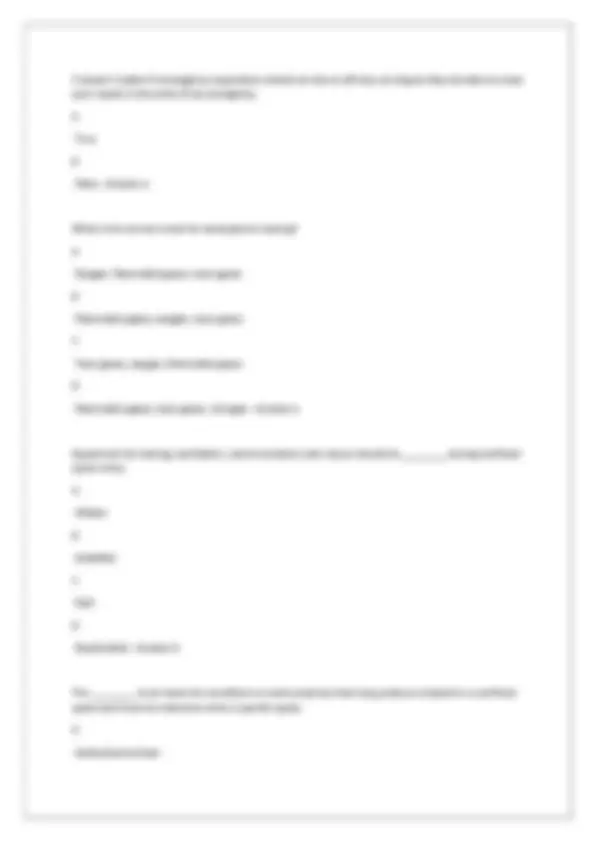
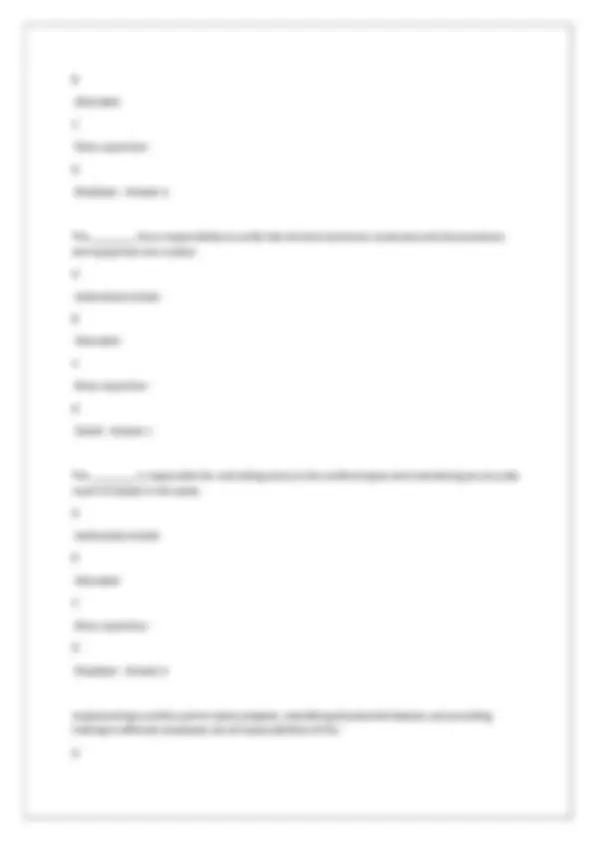
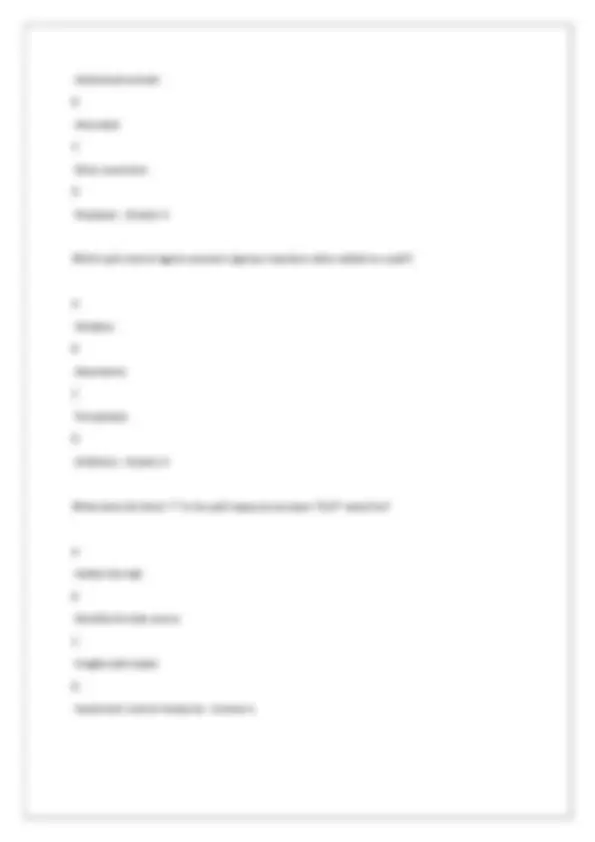
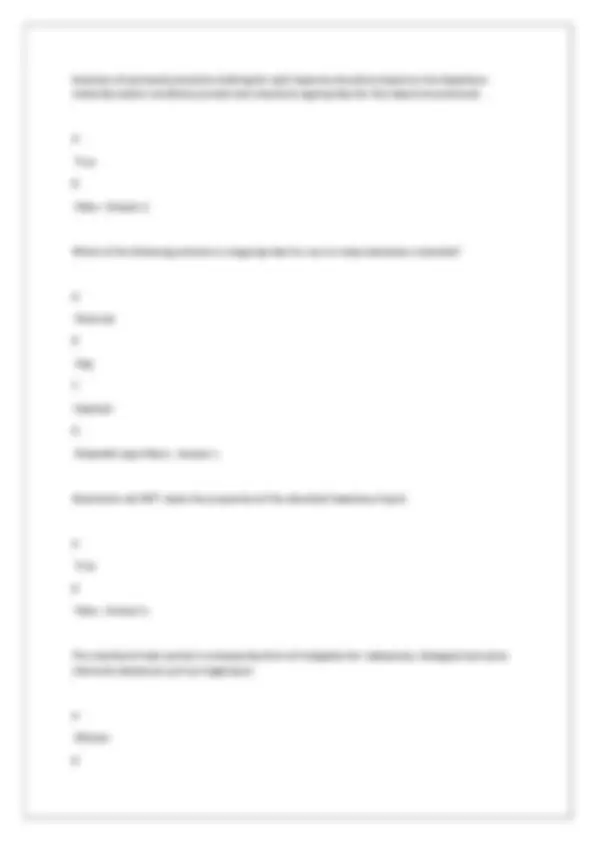

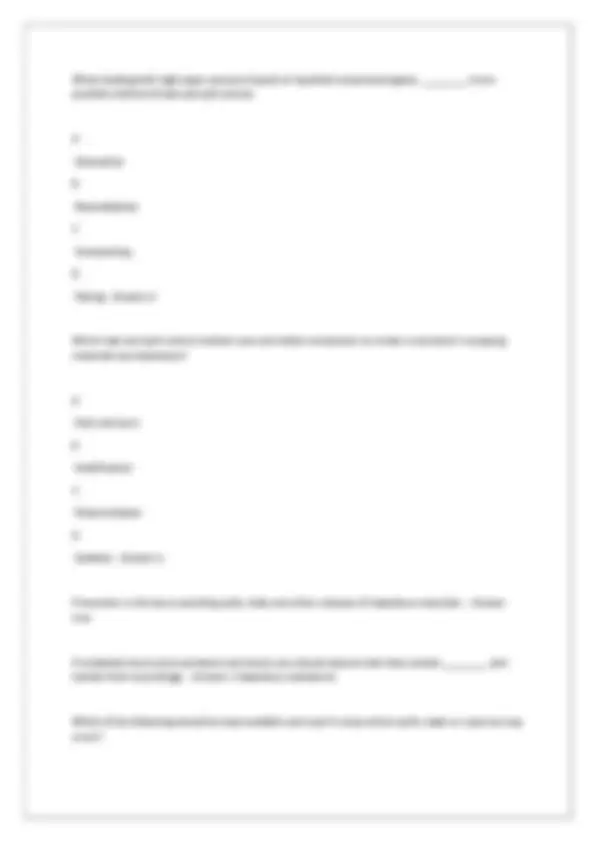
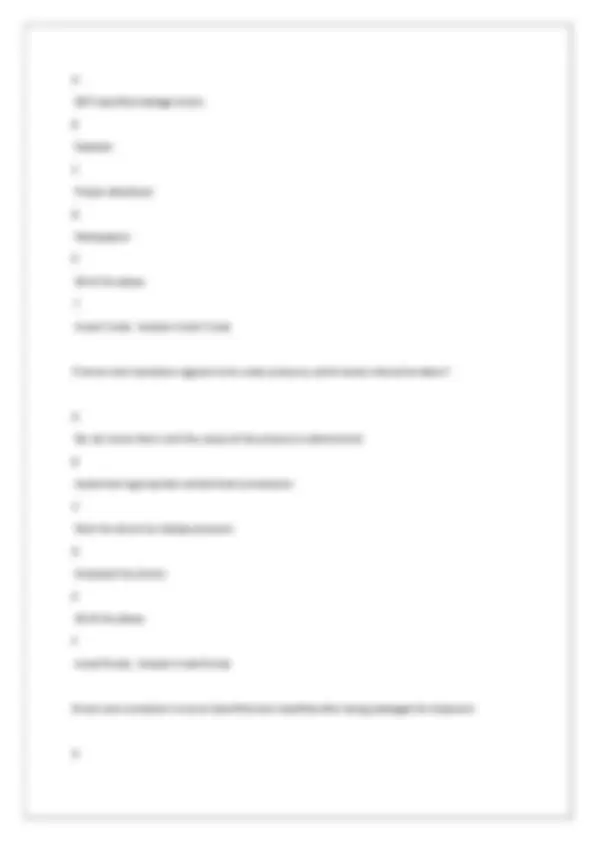
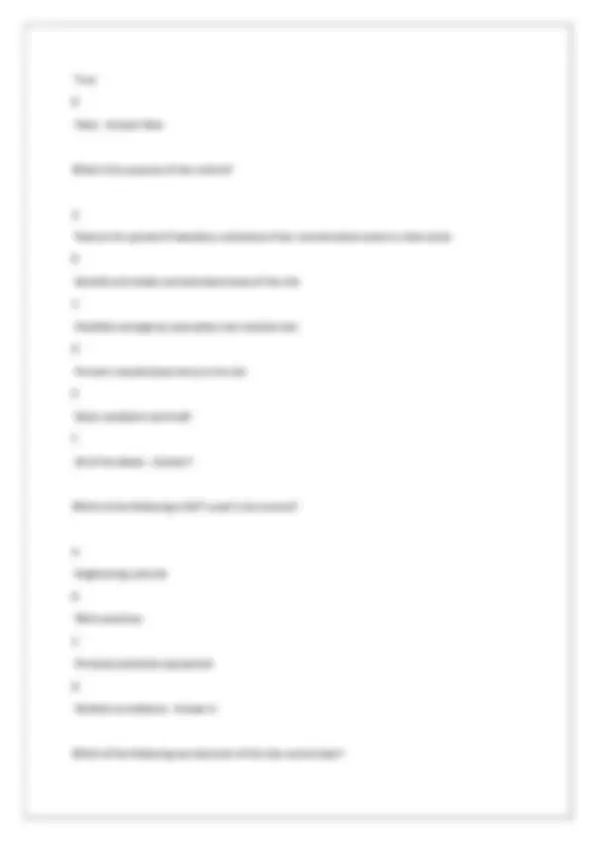
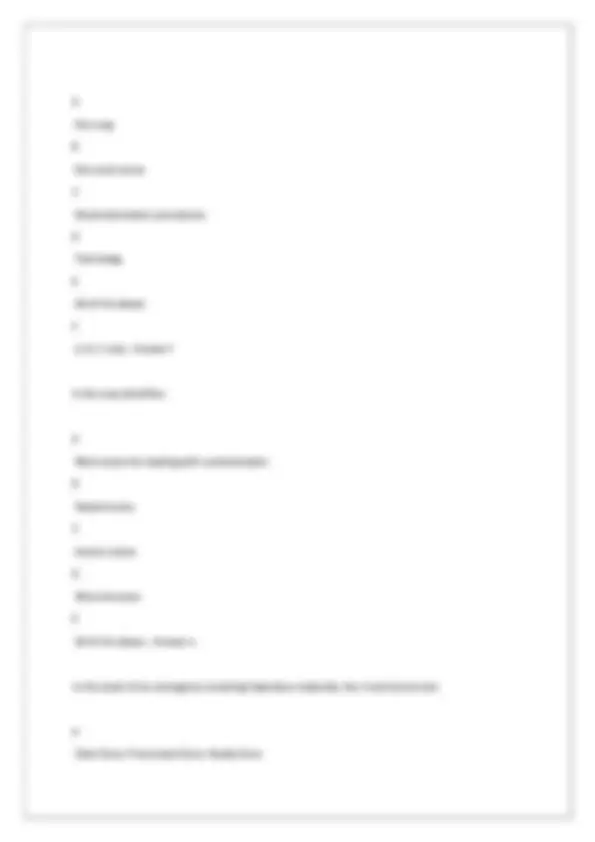
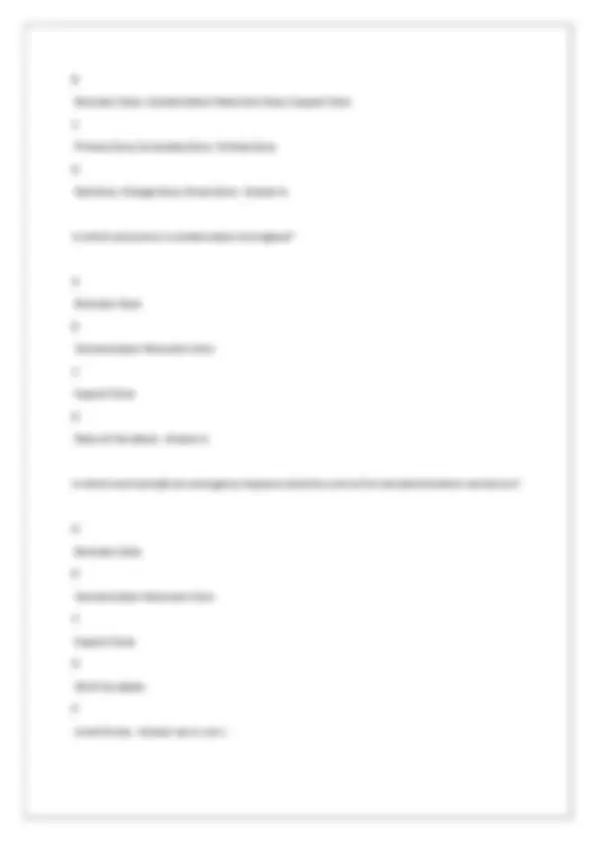
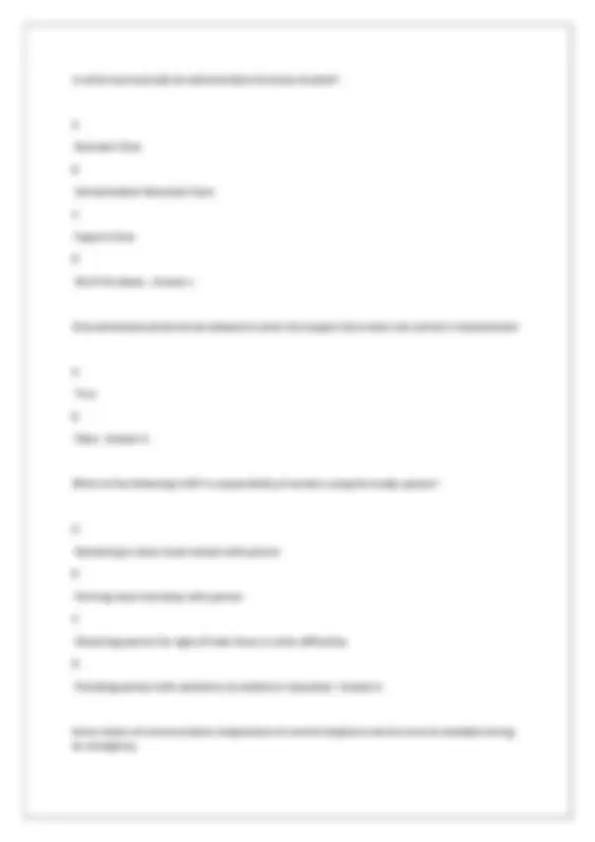
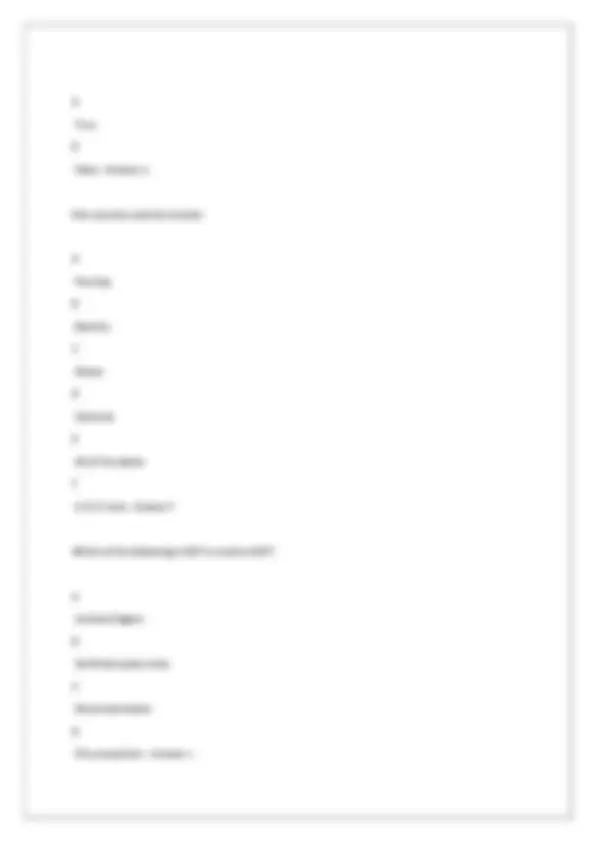
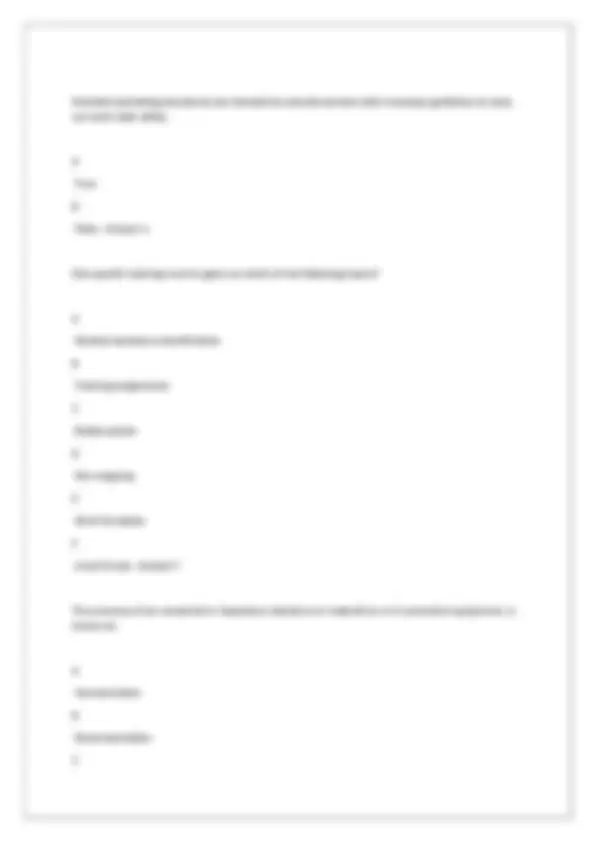
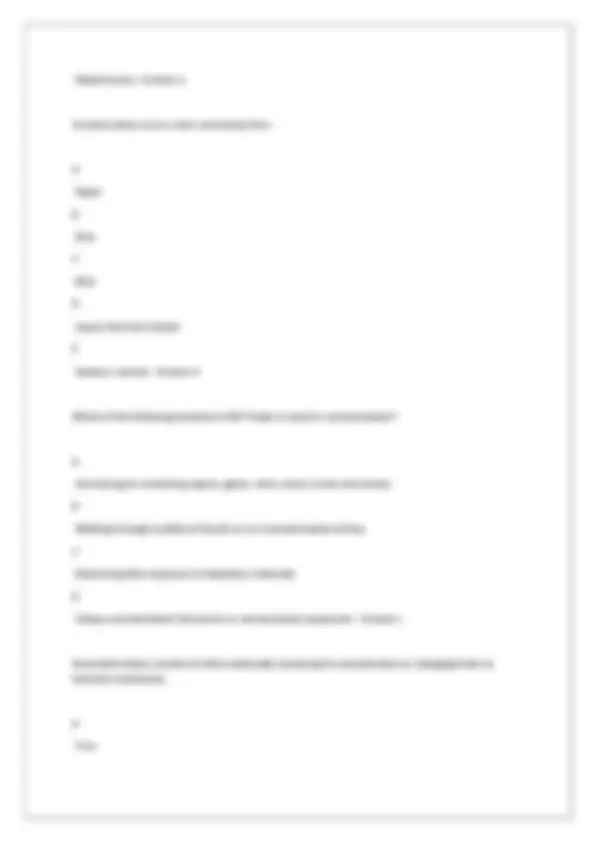
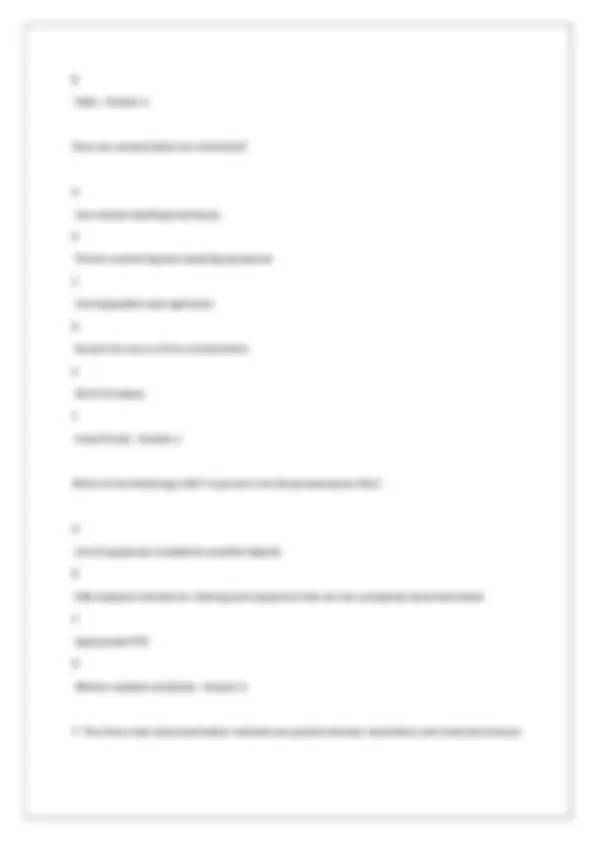
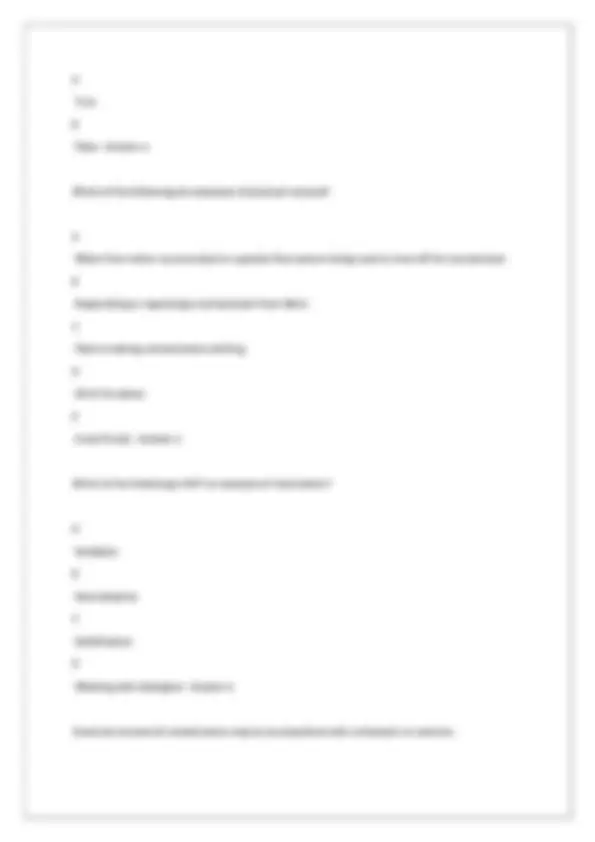
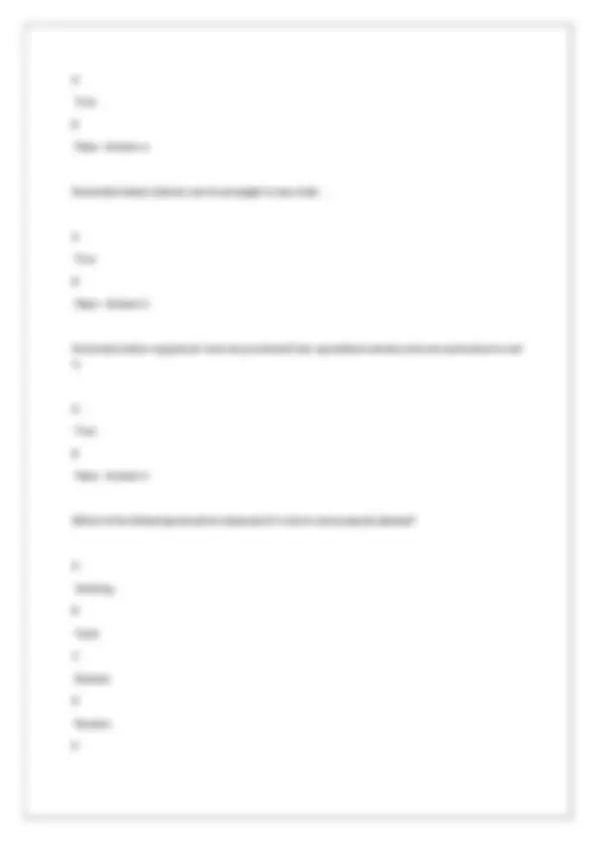
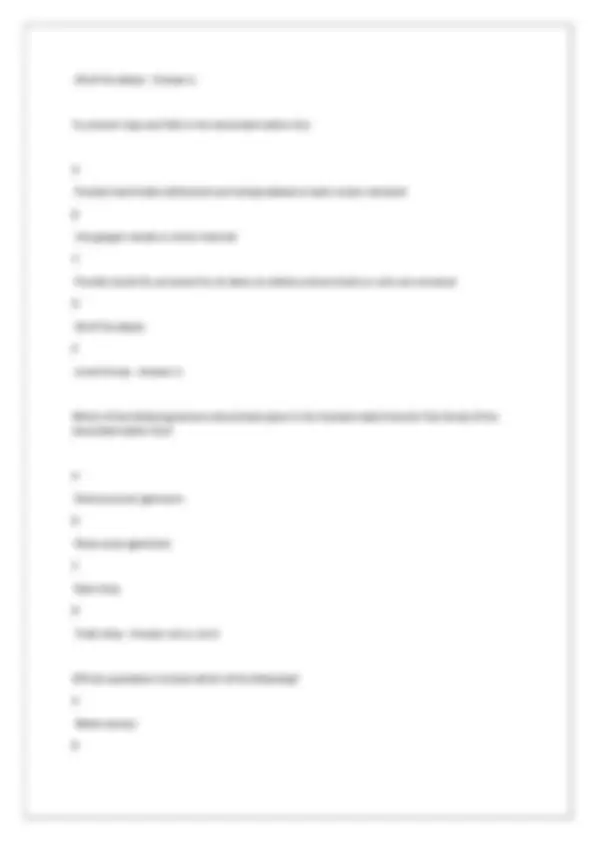

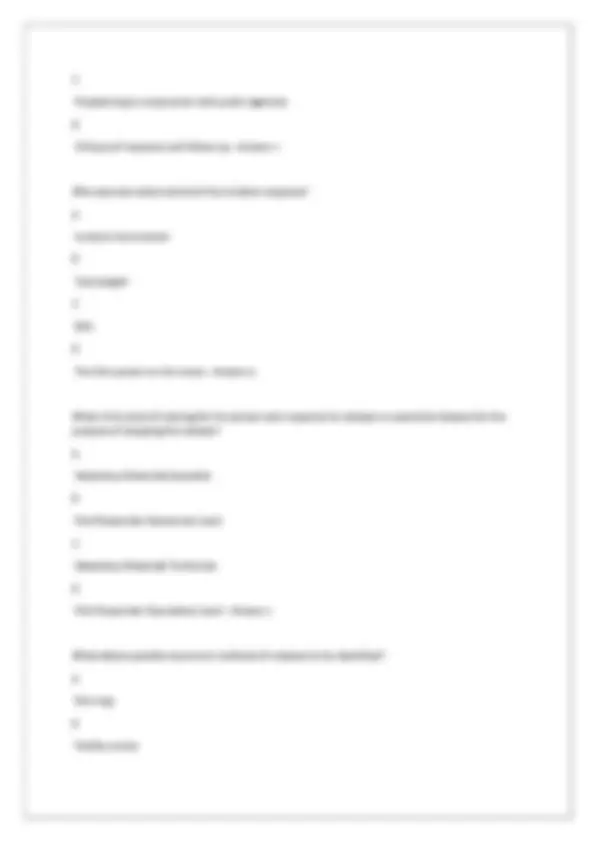
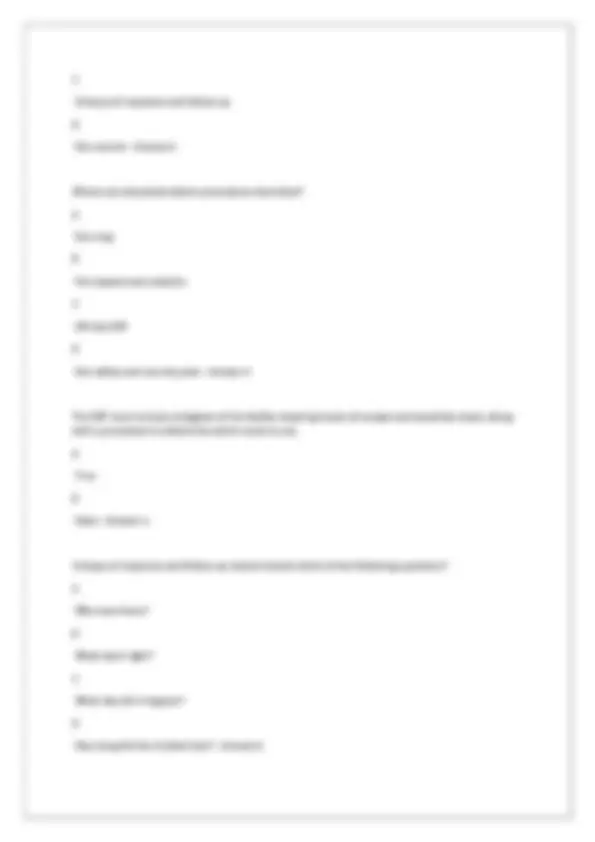
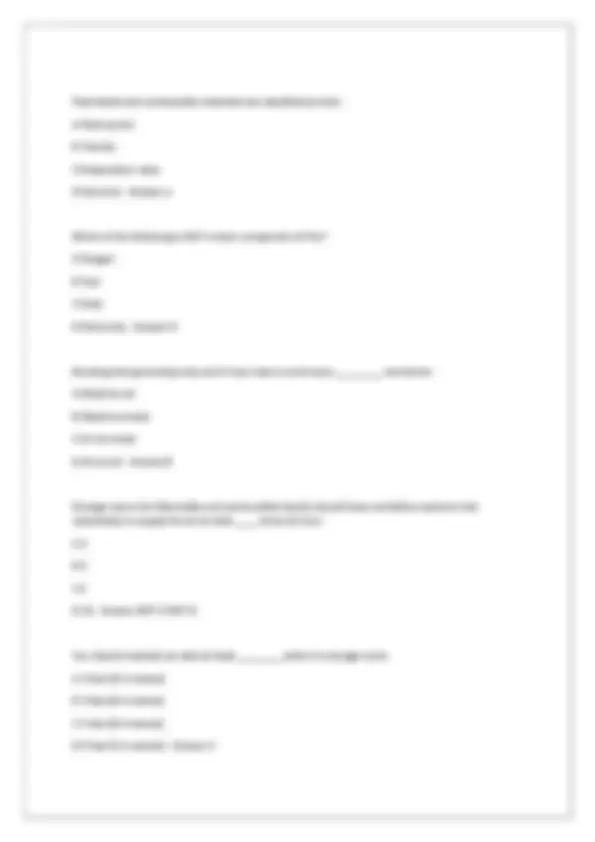
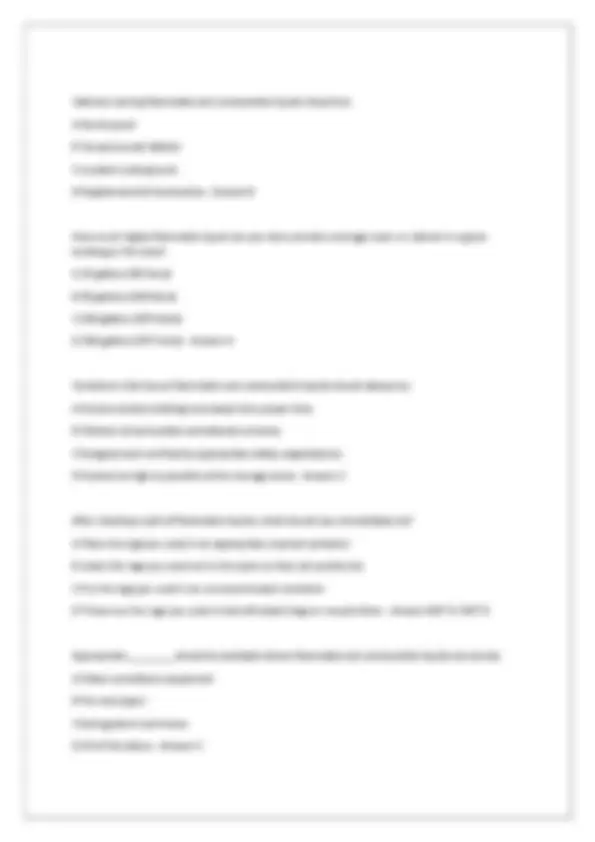
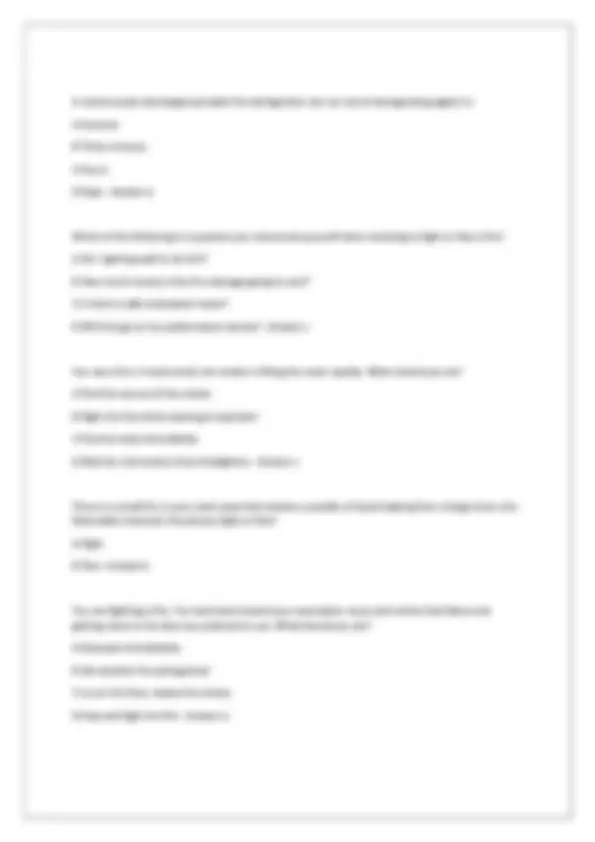
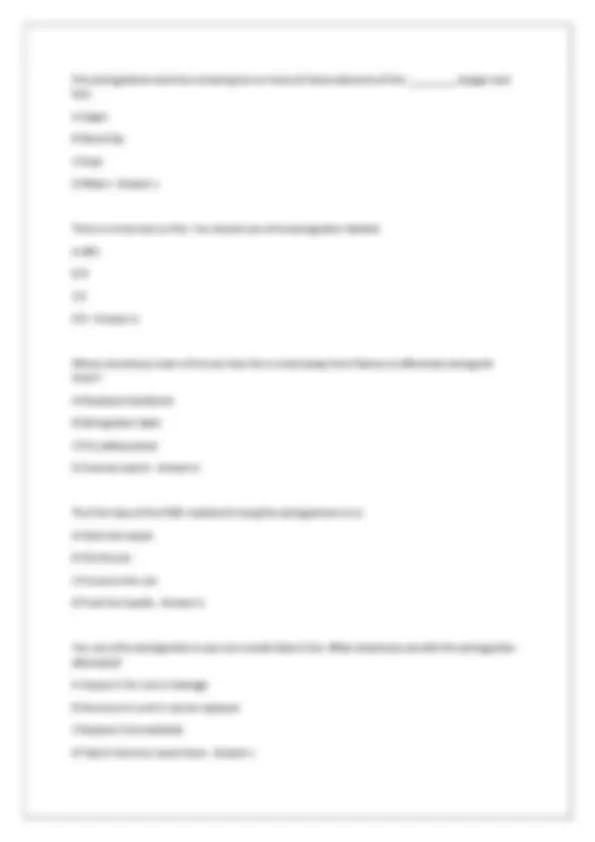
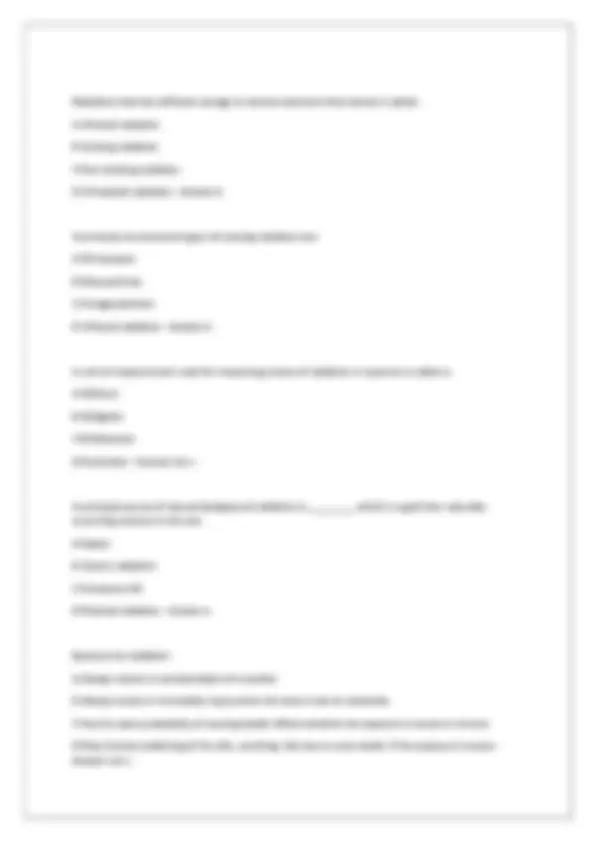
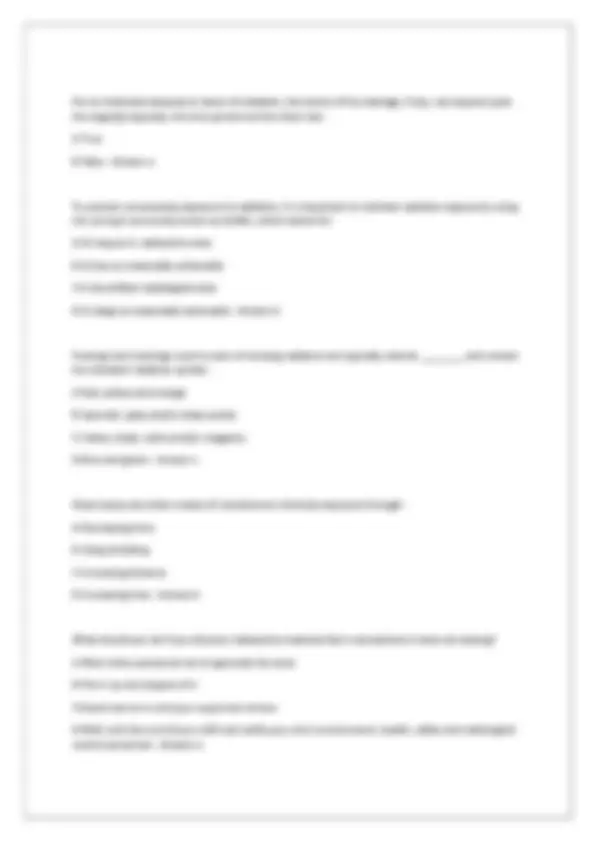
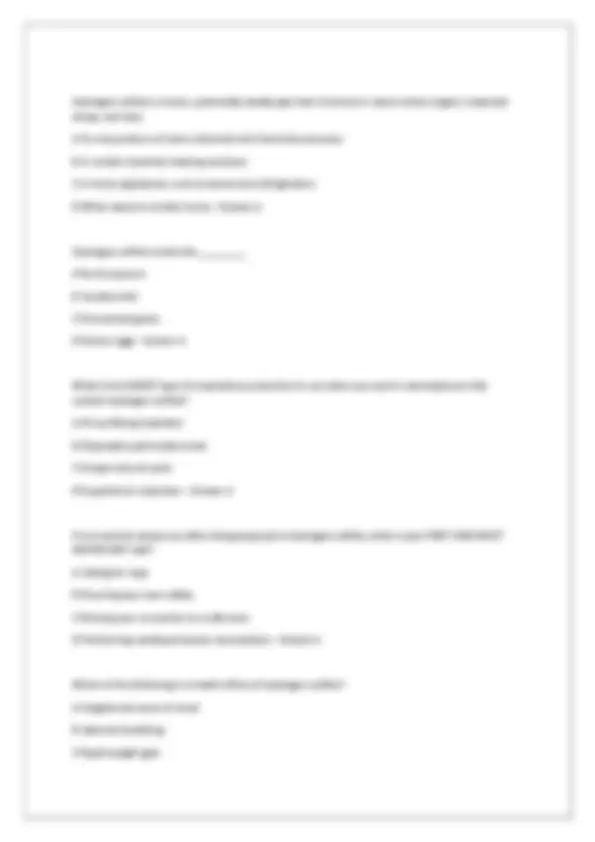
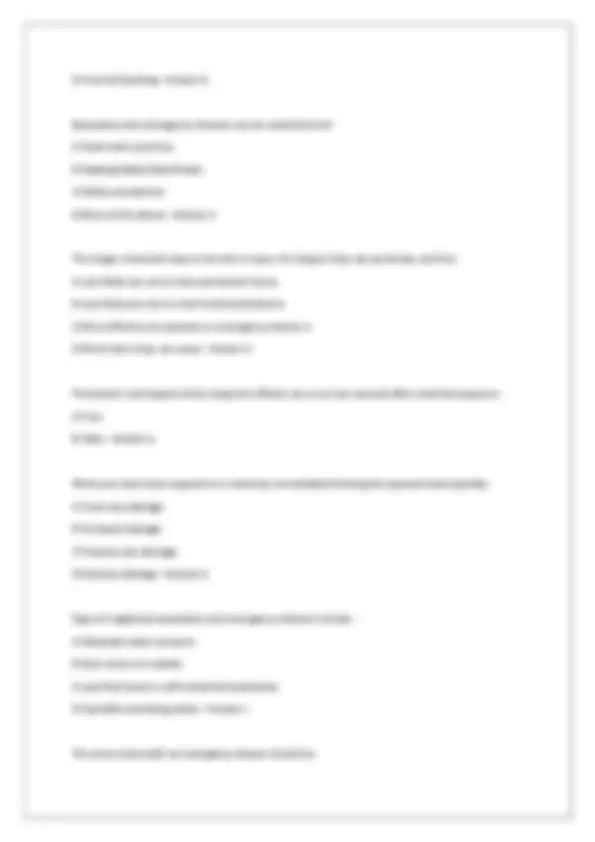
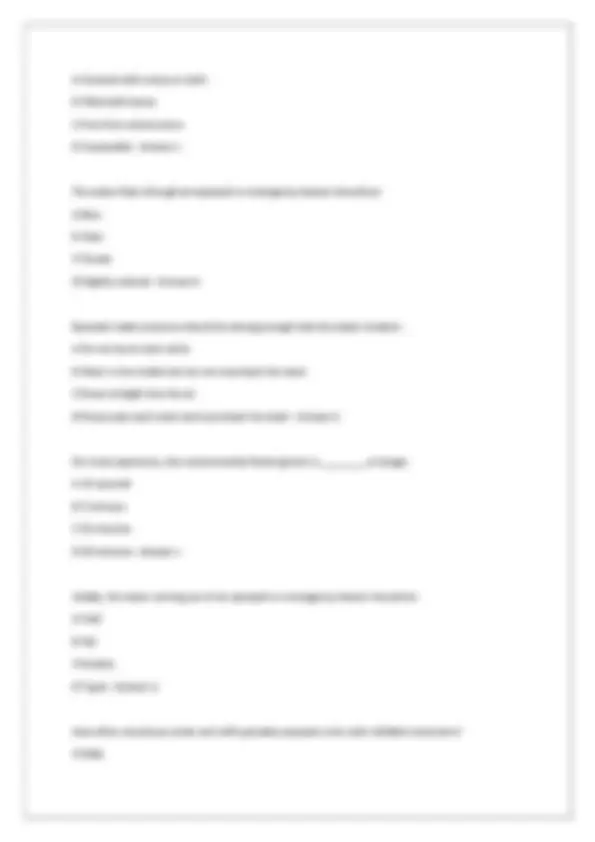
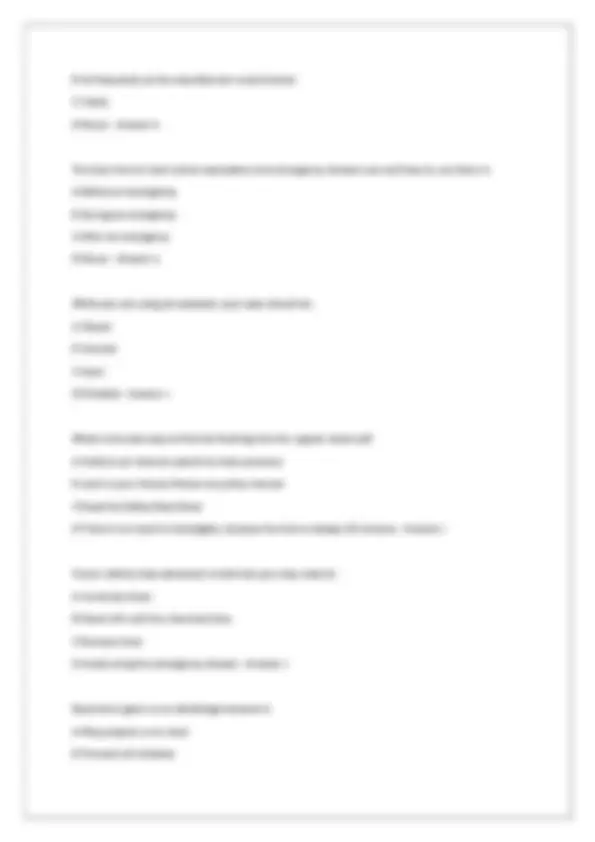

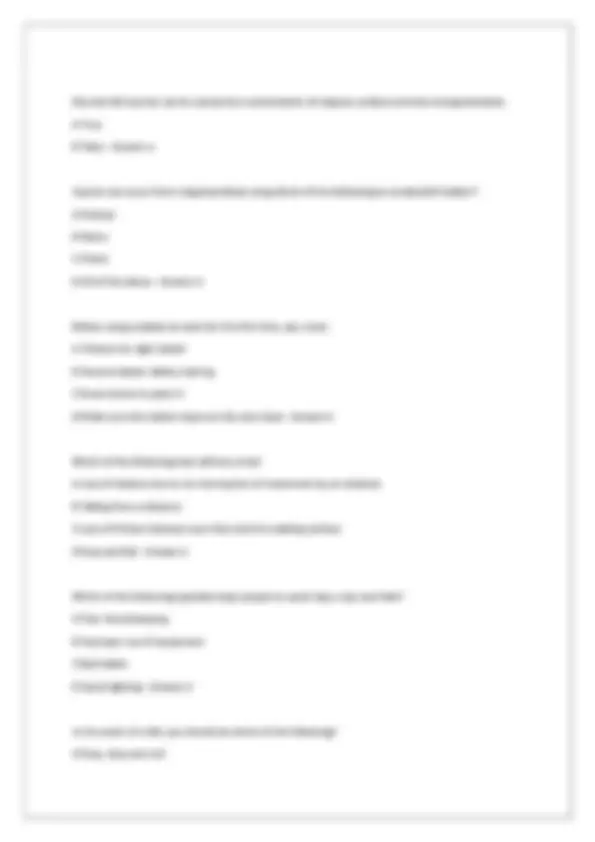
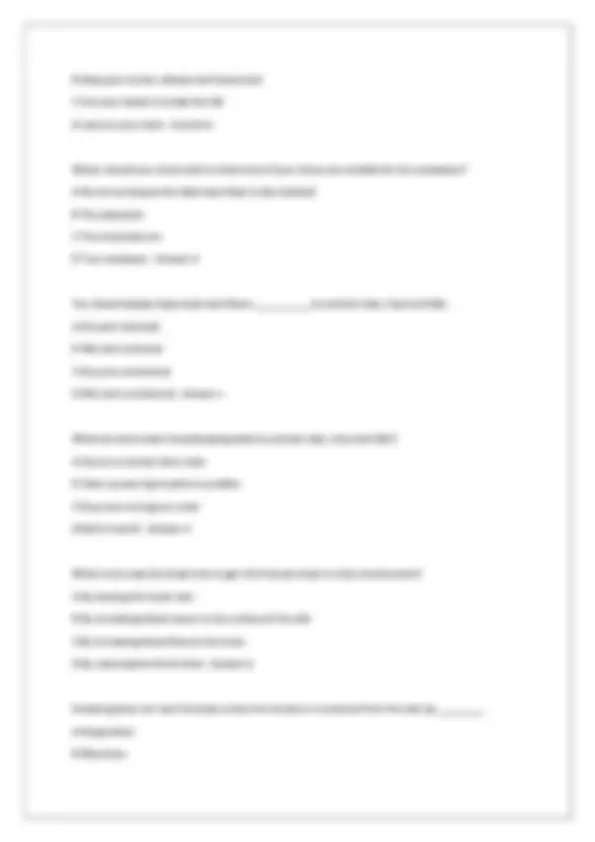
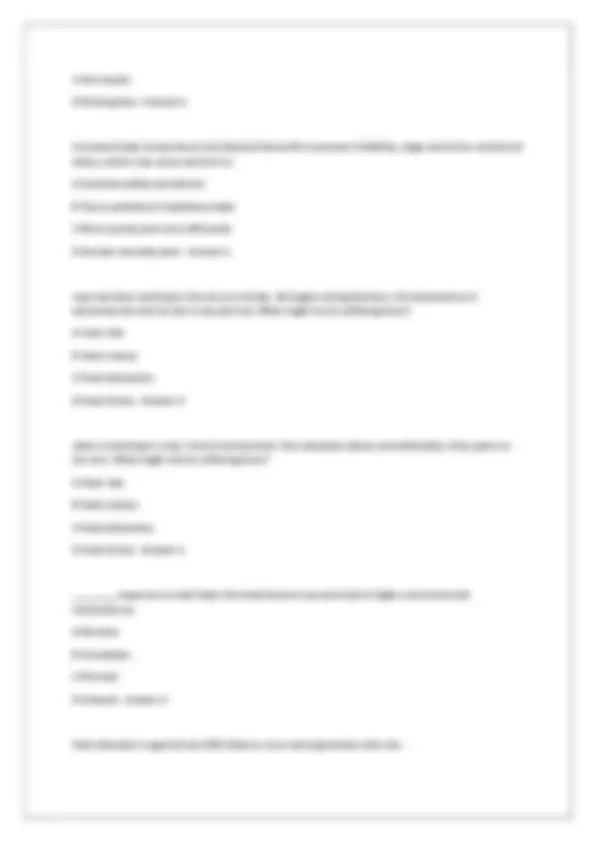
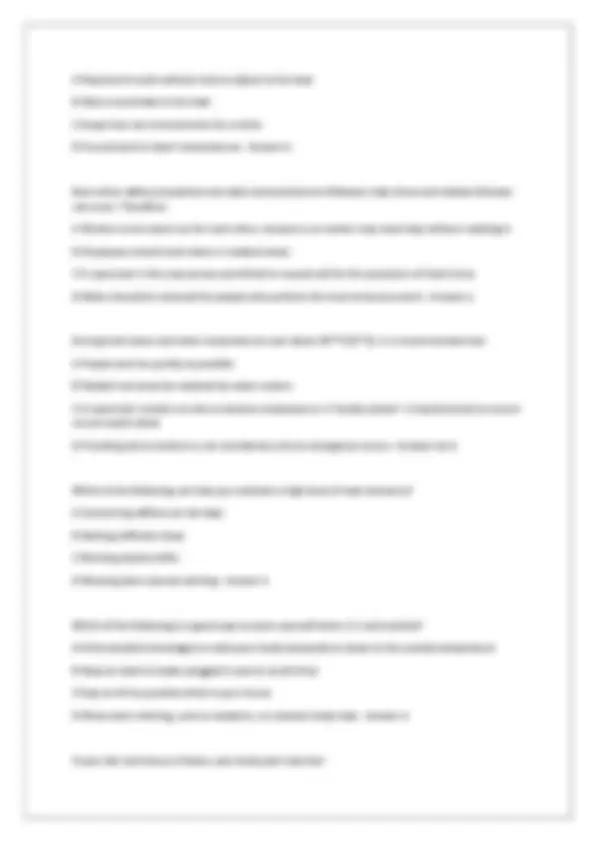
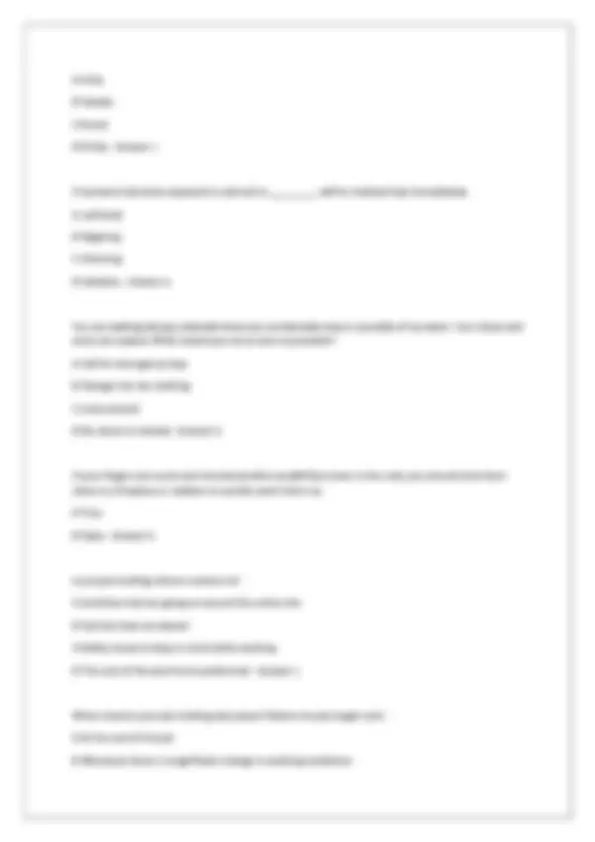
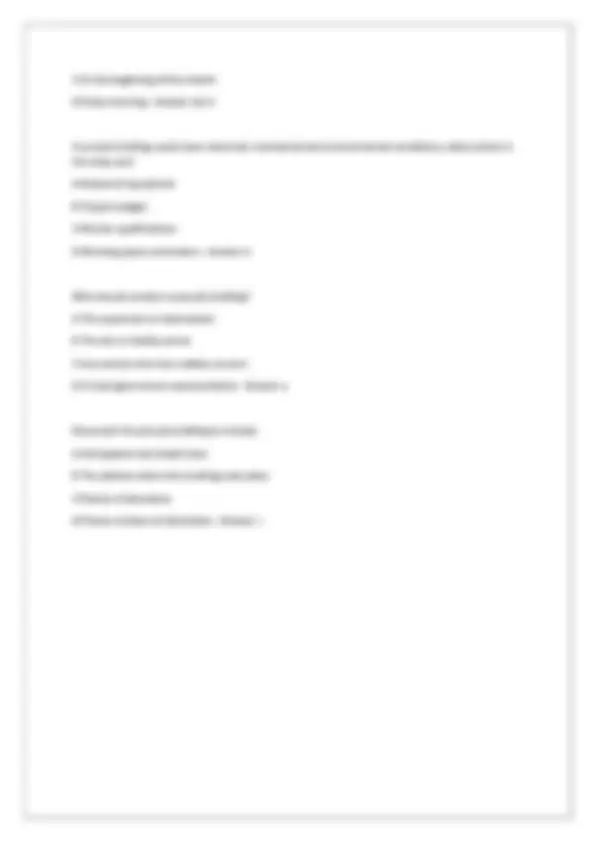


Study with the several resources on Docsity

Earn points by helping other students or get them with a premium plan


Prepare for your exams
Study with the several resources on Docsity

Earn points to download
Earn points by helping other students or get them with a premium plan
Community
Ask the community for help and clear up your study doubts
Discover the best universities in your country according to Docsity users
Free resources
Download our free guides on studying techniques, anxiety management strategies, and thesis advice from Docsity tutors
An overview of osha regulations related to hazardous materials, personal protective equipment, and emergency response procedures. It covers topics such as the hazwoper standard, levels of personal protective equipment, confined spaces, decontamination procedures, and fire safety. The document aims to educate workers on the proper handling and management of hazardous substances in the workplace, as well as the necessary safety precautions and personal protective measures to be taken. The information presented is relevant for a wide range of industries and work environments where hazardous materials are present, and can be used to develop training programs, safety protocols, and emergency response plans.
Typology: Exams
1 / 89

This page cannot be seen from the preview
Don't miss anything!


















































































Which of the following is NOT a likely cause of a hazardous substance accident? A Broken or rusted pipes B Following standard operating procedures C Faulty valves or transfer hoses D Leaking tank - Answer b What is a hazardous substance? A Any substance defined under section 101(14) of CERCLA B Any biological agent and other disease-causing agent that could cause death, disease, behavioral abnormalities, cancer, genetic mutation, physiological malfunctions (including malfunctions in reproduction), or physical deformations in exposed people or their offspring C Any substance listed by the U.S. Department of Transportation as a hazardous material under 49 CFR 172.101 and its appendices D Hazardous waste E All of the above - Answer e
All hazardous substances are hazardous wastes. A True B False - Answer b The floodwaters of Hurricane Katrina were polluted with which of the following hazardous substances? A Petroleum B Dioxin C Mercury D Pesticides E All of the above - Answer e The law that requires employers to provide a workplace that is "free from recognized hazards likely to cause death or serious physical harm" is known as: A OSH Act B RCRA C HSWA D SARA - Answer a
Subpart H - Hazardous Materials C Subpart I - Personal Protective Equipment D Subpart Z - Toxic and Hazardous Substances - Answer a The HAZWOPER Standard applies to: A Cleanup operations involving hazardous substances that are conducted at uncontrolled hazardous waste sites B Corrective actions involving cleanup operations at sites covered by RCRA C Emergency response operations for releases or substantial threats of release of hazardous substances regardless of location D Materials that are currently destined for disposal or recycling E All of the above F A, B and C only - Answer f How many levels of training apply to "regardless of location" emergency responders? A 3 B 5 C 7 - Answer b Refresher training is only required for individuals who took 40 hours of HAZWOPER training initially. A
True B False - Answer b The OSHA HAZWOPER Standard requires employers to develop and implement a written safety and health program for their employees involved in hazardous waste operations. A True B False - Answer a The site safety and health plan must be kept on-site and must address the safety and health hazards of each phase of site operation. A True B False - Answer a Which of the following must be included in the safety and health plan? A Hazard analysis for all tasks on-site B Site control measures C Names of key personnel D Medical surveillance guidelines E All of the above - Answer e Which law made OSHA responsible for setting standards to protect workers involved in cleaning up Superfund sites?
First Responder Awareness Level B First Responder Operations Level C Hazardous Materials Specialist D On-Scene Incident Commander - Answer d Commonly known as the Superfund program, ________ was enacted by Congress in 1980 in response to the Love Canal situation. A SARA B HSWA C CERCLA D RCRA - Answer c Which law made OSHA responsible for setting standards to protect workers involved in cleaning up Superfund sites? - Answer not CERCLA Which training level describes individuals who are likely to discover a hazardous substance release and are trained to notify the proper authorities? - Answer not First Responder Operations Level A responder trained to the Hazardous Materials Technician level can: - Answer not Act as a liaison with federal, state or local authorities So how much waste must a facility generate to earn these classifications? - Answer CESQG: Less than 100 kg hazardous waste per month SQG: 100 kg to 1,000 kg hazardous waste per month
LQG: More than 1,000 kg hazardous waste per month Generators may accumulate up to _____ gallons of hazardous waste indefinitely at the point of generation. - Answer 55 It is the responsibility of the generator to determine whether a waste is hazardous. - Answer TRUE Discharges of industrial wastewater generally do not require a permit. - Answer FALSE Stormwater pollution is caused by rain and snow melt picking up pollutants from: A) Outdoor equipment B) Processes C) Wastes D) Storage areas Knowledge Check: Stormwater E) ALL OF ABOVE - Answer E Which of the following is a Best Management Practice for handling industrial waste? A Disposing of paint, solvents or oil directly onto the ground B Locating an industrial waste storage area adjacent to a storm drain or body of water C Cleaning up chemical spills at the end of every week D Taking measures to prevent or minimize soil erosion at the facility - Answer d Which of the following are EPA-regulated areas? A Hazardous waste generation
Your EMS administrator - Answer a If the monthly generation threshold is exceeded for classification, the classification status will only be changed for the duration of the exceeded threshold. A True B False - Answer b CESQGs are exempt from many of the requirements pertaining to the other generator classifications. A True B False - Answer a How often must small or large quantity generators conduct inspections of their storage areas? A Daily B Weekly C Monthly D Yearly - Answer b Generators may accumulate up to ___ gallons of hazardous waste indefinitely at the point of generation. A 45 B 55
75 - Answer b You must label drums or other containers of hazardous waste: A Once the drum or container is full B Only if stored at a satellite location C Before placing any waste in them D If the accumulation start date is within the current calendar year - Answer c Stormwater pollution may be caused by rain and snow melt picking up pollutants from outdoor equipment or storage areas. A True B False - Answer a Which of the following requires special management in order to avoid disposal as a hazardous waste? A Scrap metal B Scrap tires C Used batteries D Empty drums
Best Management Practices (BMPs) are: A A defined set of procedures released from the EPA to control the level of pollutants and dangerous chemicals in the environment B Administrative practices to ensure the cost-effective storage of hazardous chemicals C Common-sense practices to prevent the introduction of pollutants to stormwater and to prevent the discharge of dangerous chemicals - Answer c Which type of battery is OK to dispose of in the general trash? A Automobile B Nickel-cadmium C Lead-acid D None of the above - Answer d When you want to get rid of an old or unused chemical, which is generally the least preferable option? A Use it B Throw it away C Donate it D Recycle it - Answer b
Which classification describes a facility that generates less than 100 kg of hazardous waste per month? A Conditionally Exempt Small Quantity Generator (CESQG) B Small Quantity Generator (SQG) C Large Quantity Generator (LQG) - Answer a What is the PRIMARY purpose of the HazCom Standard? Making sure that all hazardous chemicals in the workplace are identified and documented Making sure the government knows what chemicals are being brought into the country Reducing the number of lawsuits involving employee exposure to hazardous substances Reducing workplace injuries and illnesses due to hazardous chemicals - Answer Reducing workplace injuries and illnesses due to hazardous chemicals Phosphoric acid: Extremely corrosive to some metals, and can severely irritate and burn the skin and eyes. Breathing its vapors can make the lungs ache. Health Physical Both - Answer both Acetone: Can irritate the skin and eyes. Repeated exposure can affect a person's central nervous system. It is also very flammable in liquid or vapor form. Health Physical Both - Answer both
Improve reading comprehension among workers C Protect employers from worker lawsuits D Reduce confusion and worker injury and illness - Answer d The GHS standardizes an international approach to the HazCom Standard. A True B False - Answer a The hazard statement on Chemical A's label says it can cause skin irritation and respiratory problems. What type of hazard is presented by this chemical? A Ambiguous hazard B Health hazard C Physical hazard D Retroactive hazard - Answer c Chemical B is pyrophoric. What type of hazard is presented by this chemical? A Health hazard B Layered hazard C Physical hazard D
Physical and health hazards - Answer c Who must provide labels when they ship chemicals? A Manufacturers B Importers C Distributors D All of the above - Answer d When performing a hazardous chemical inventory, employers must consider chemicals in liquid or gas form only. A True B False - Answer b In chemical inventories, employers must identify chemicals in: A Chewing tobacco B Clothes detergent C Pipes D Soft drinks - Answer c At a multi-employer worksite, employers must include details in their ________ about how they will share information with the other employers. A
Legible C Made of paper D Permanent - Answer b The more severe hazards are identified on labels with which signal word? A Danger B Warning C Careful D Stop - Answer a Whom can you contact to obtain an SDS if you have not received one with a hazardous chemical? A EPA B OSHA C The local government D The supplier - Answer d A Safety Data Sheet needs to include the following: A Price of product B
Routes of exposure C Size of container D Types of applications - Answer b Whose responsibility is it to ensure that you know exactly where the SDSs are kept in your workplace? A Yours B Your employer's C Your supervisor's D OSHA's - Answer a There is a specific ____-section format required for Safety Data Sheets. A 6 B 10 C 16 D 20 - Answer c Employees must be trained on the Hazard Communication program whenever: A A new hazard is introduced into their work area B